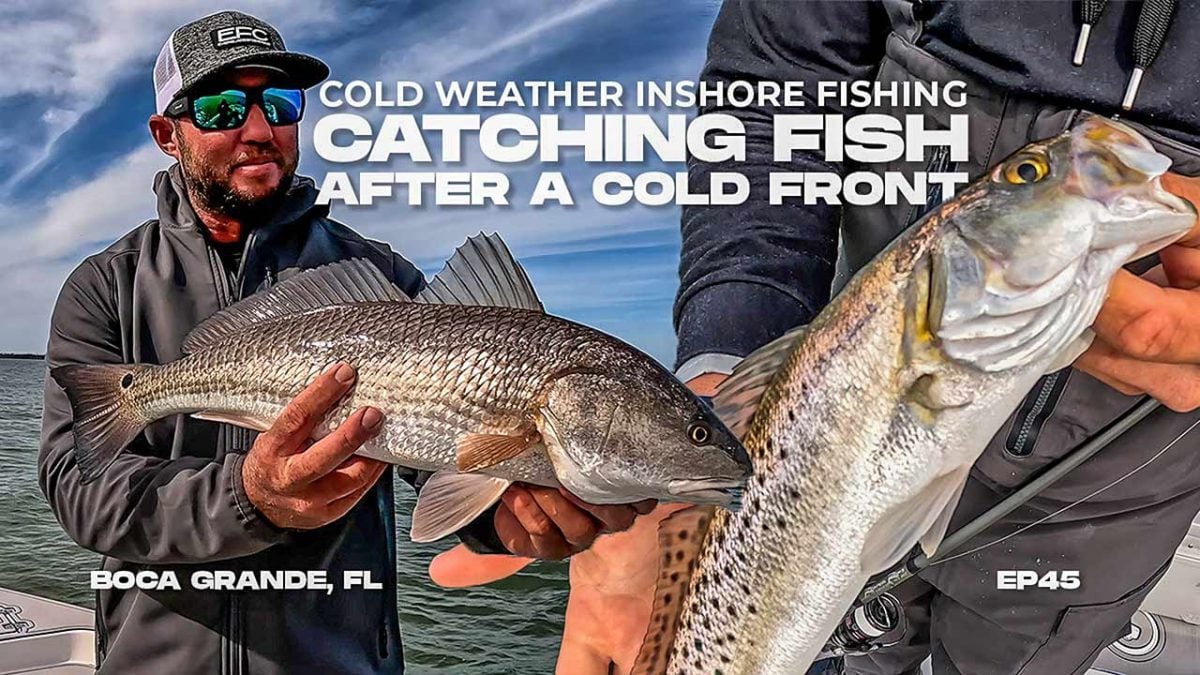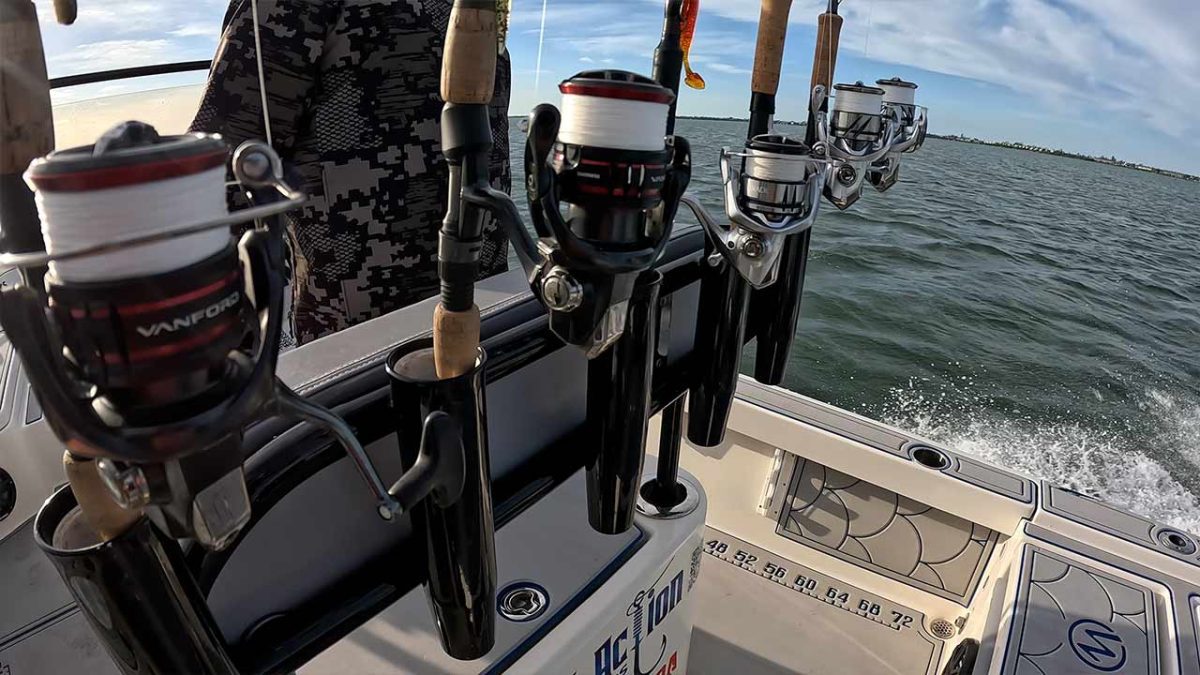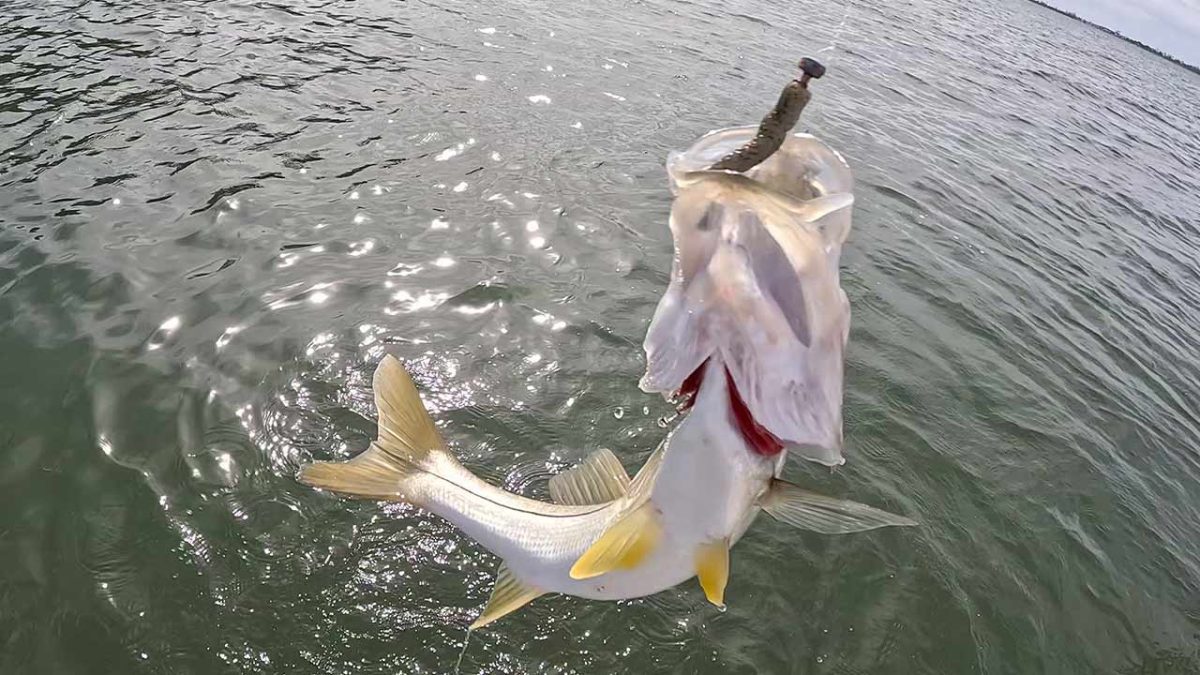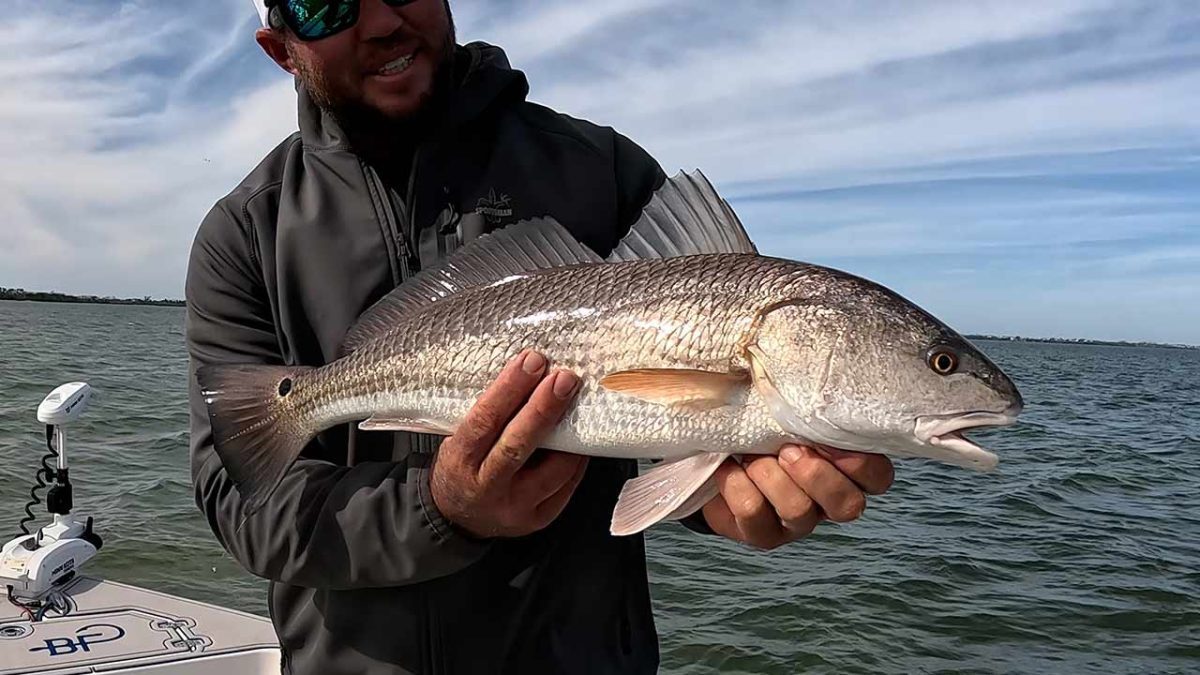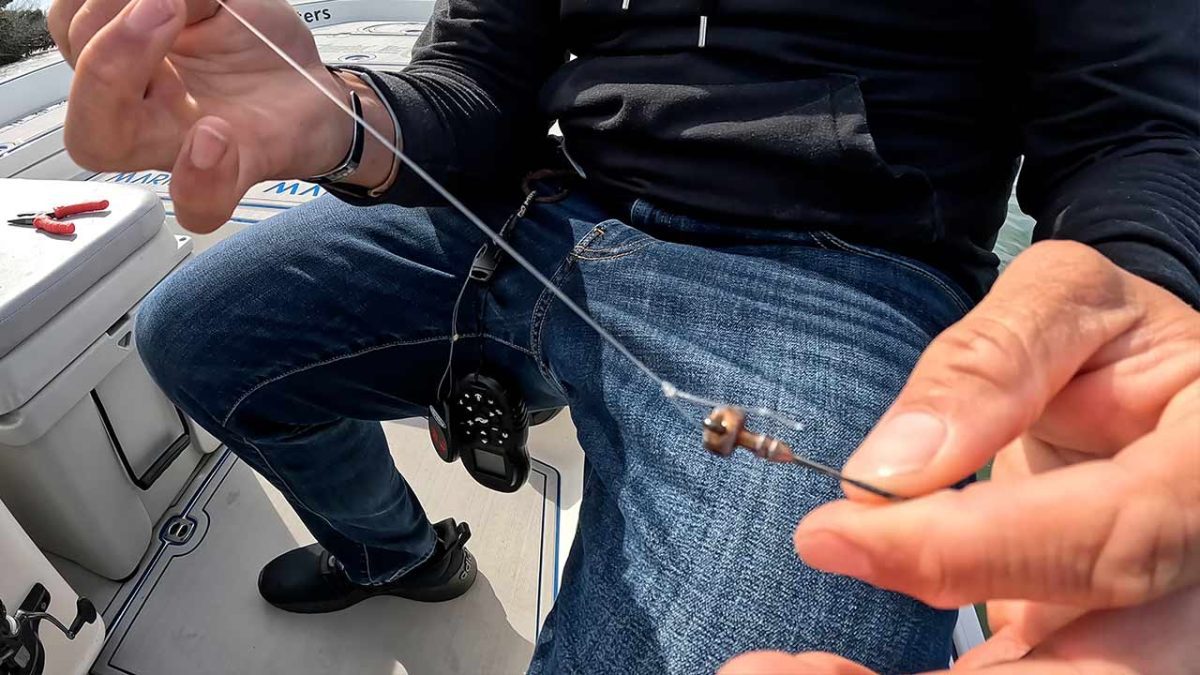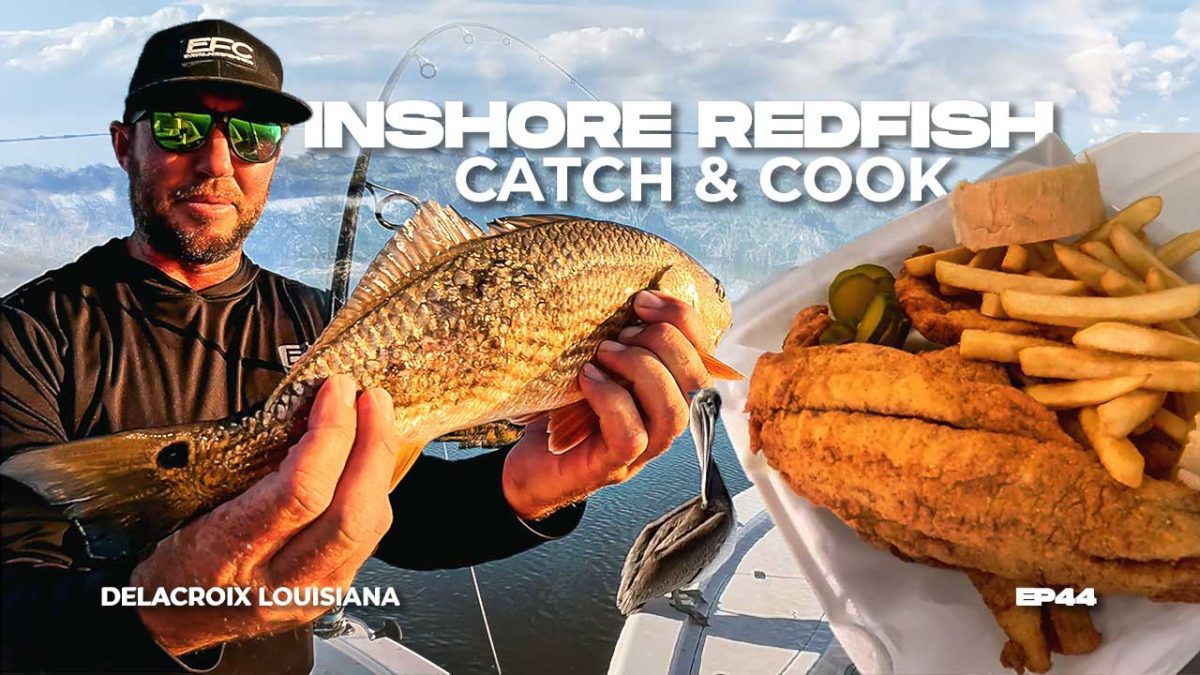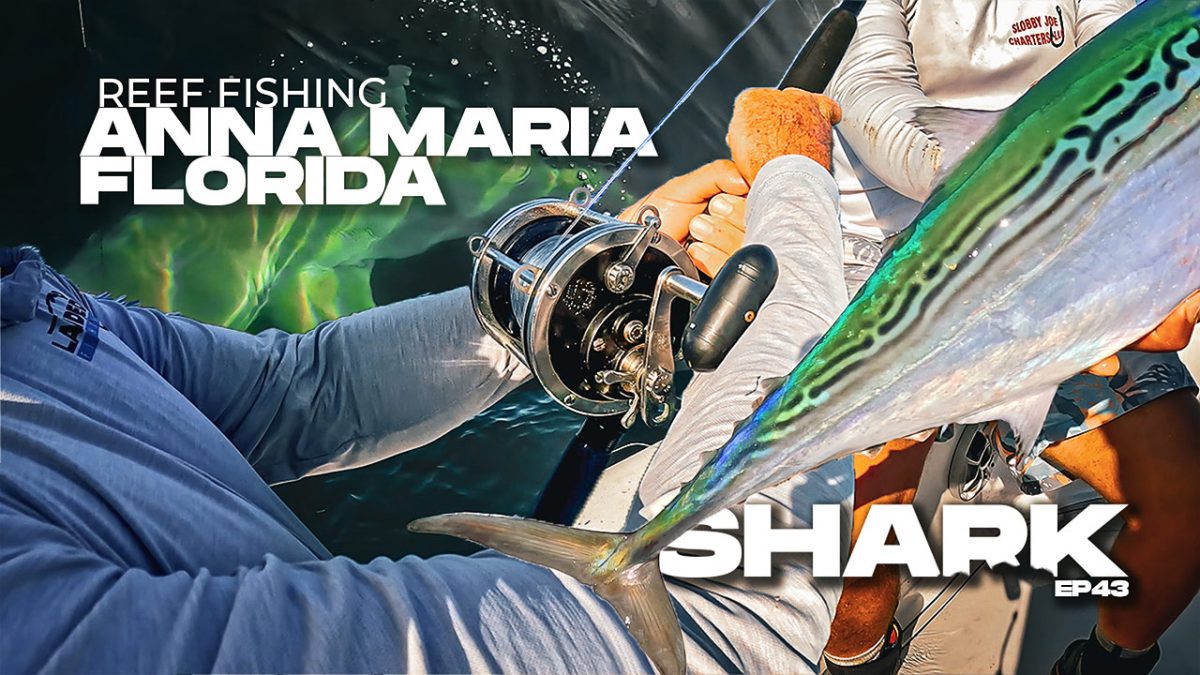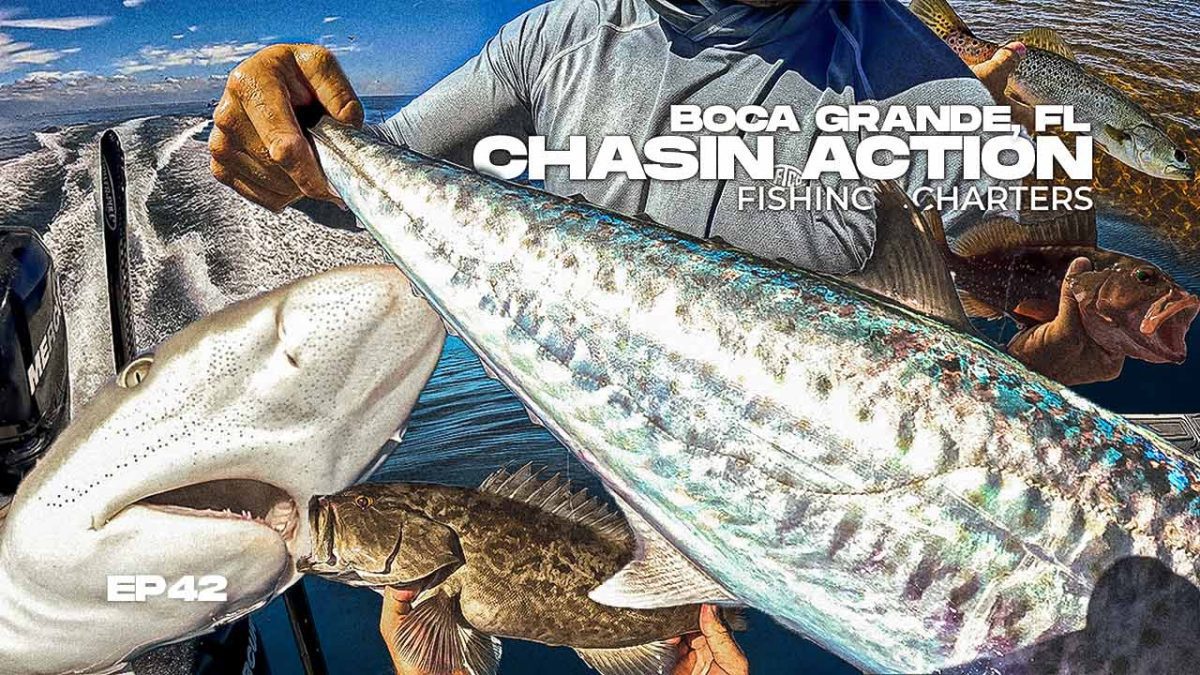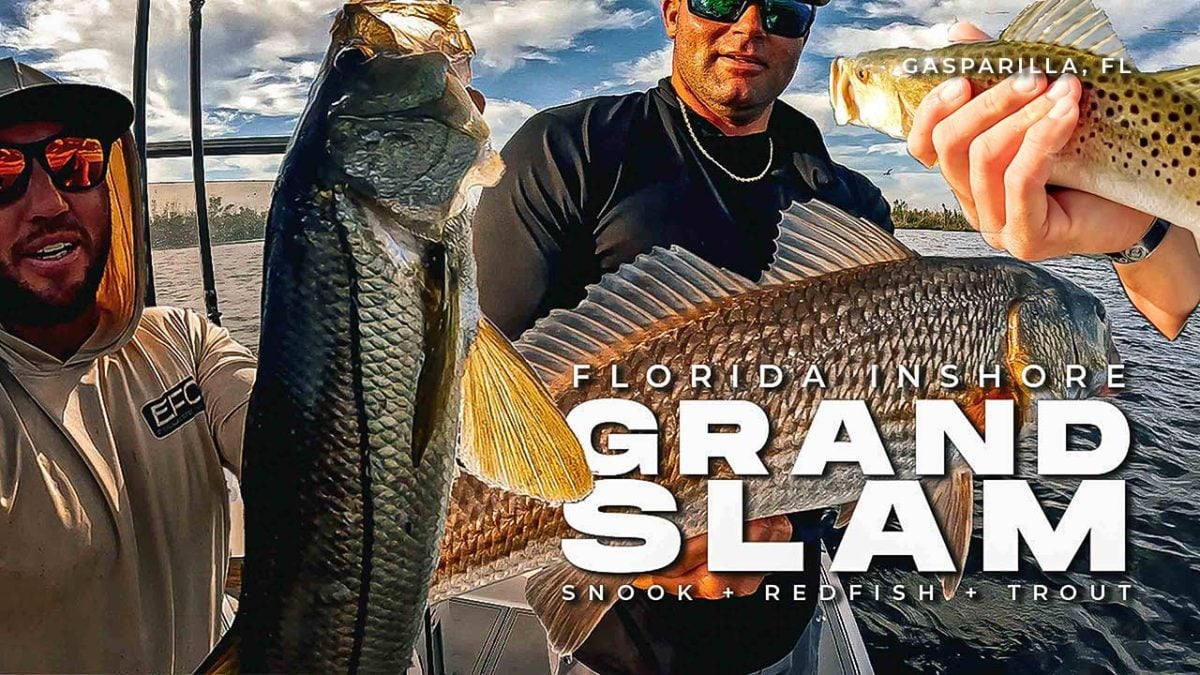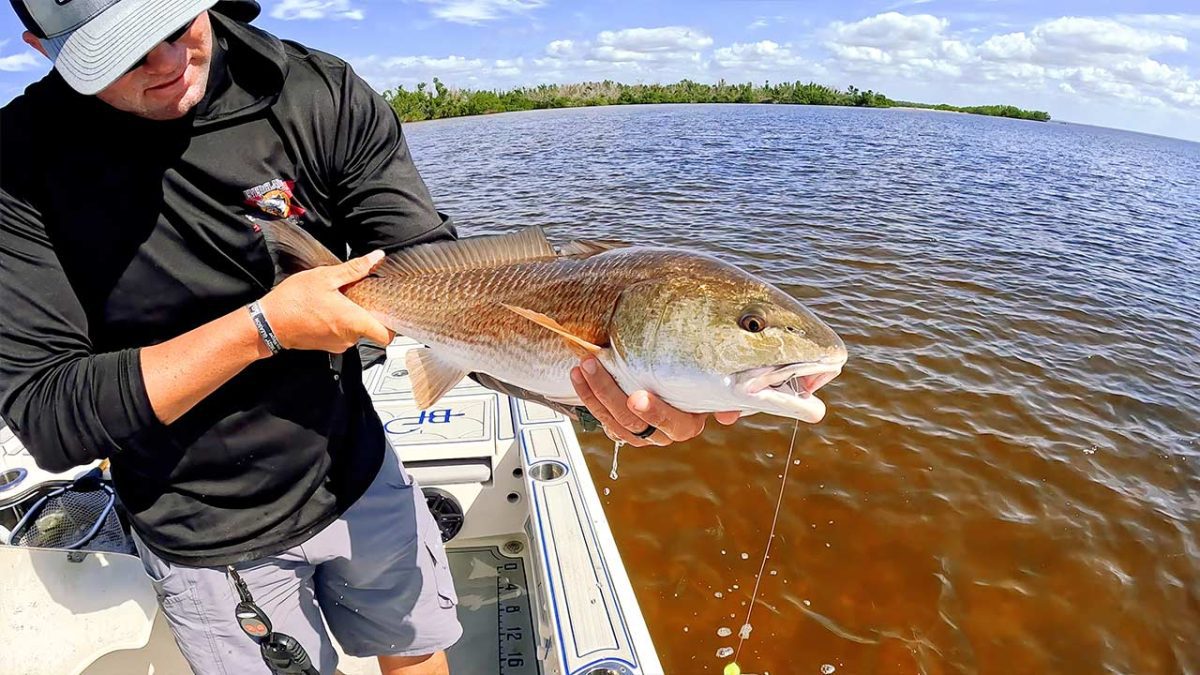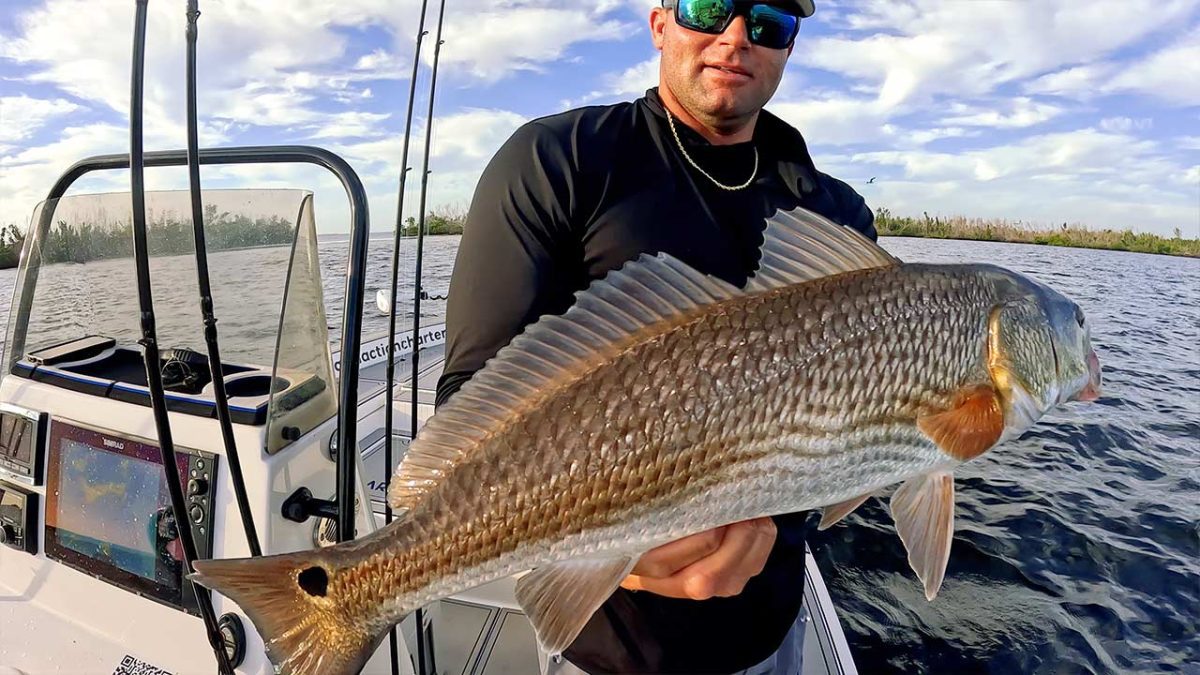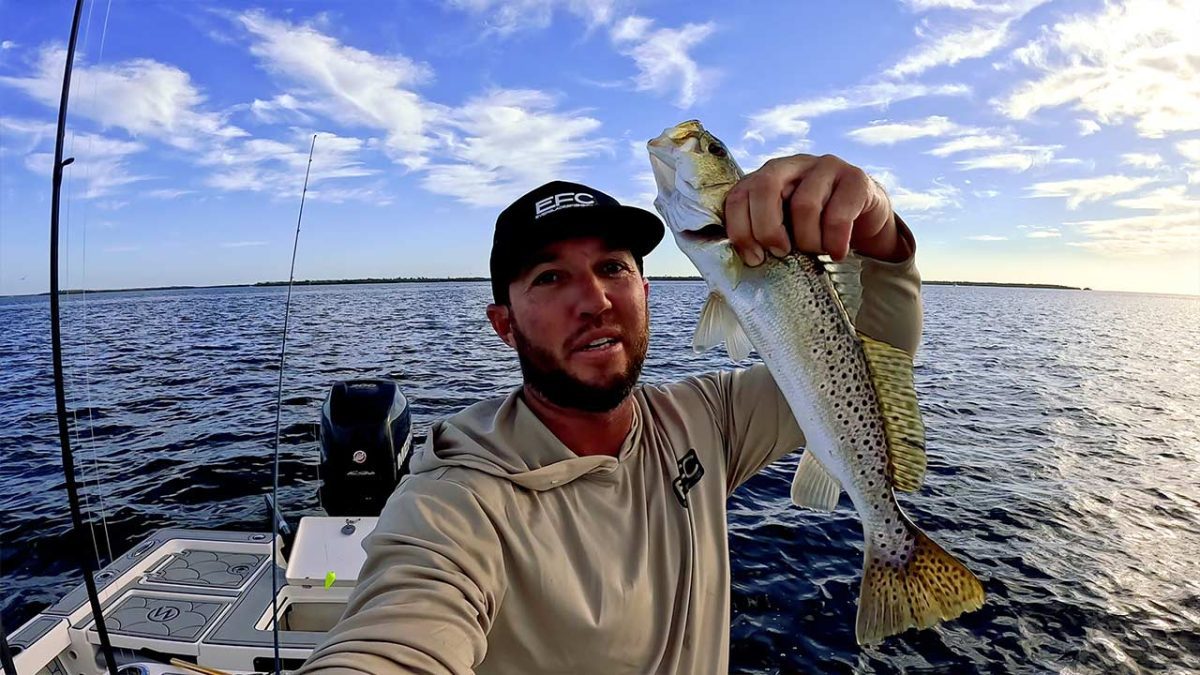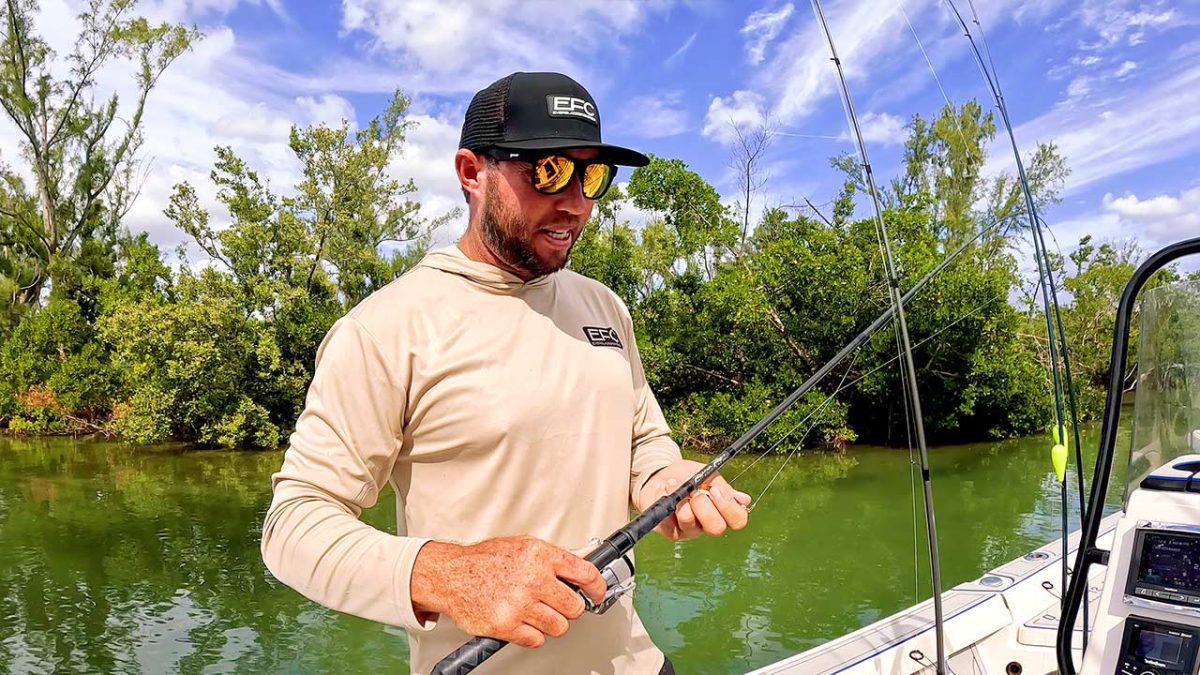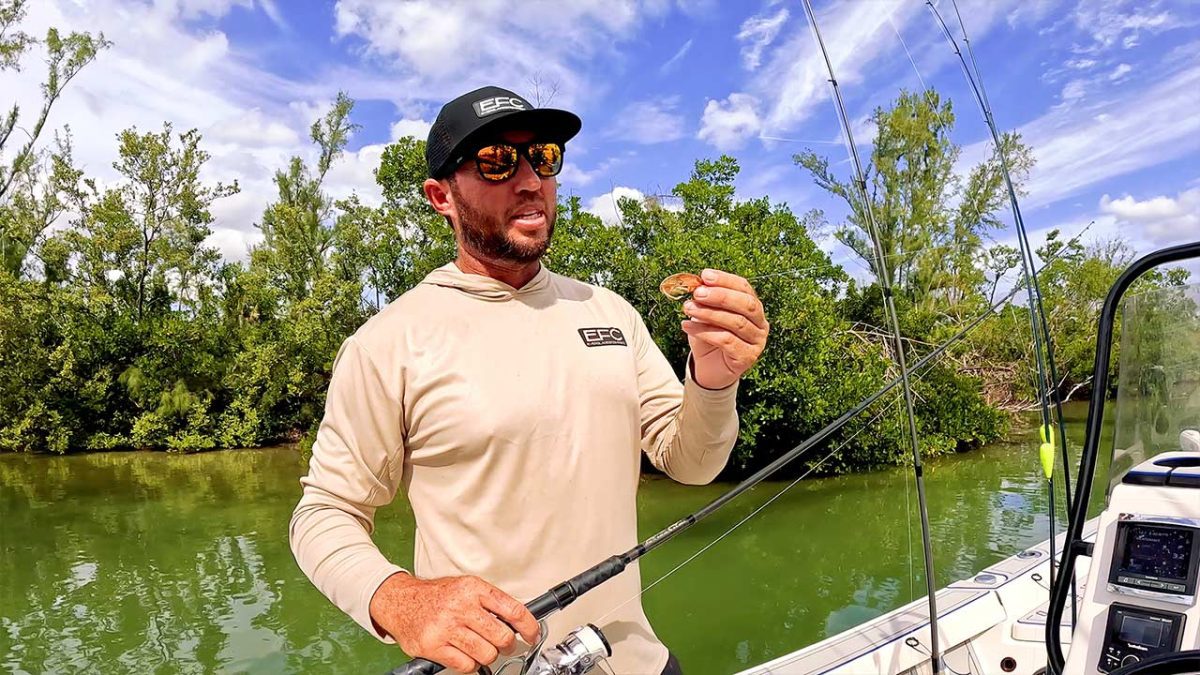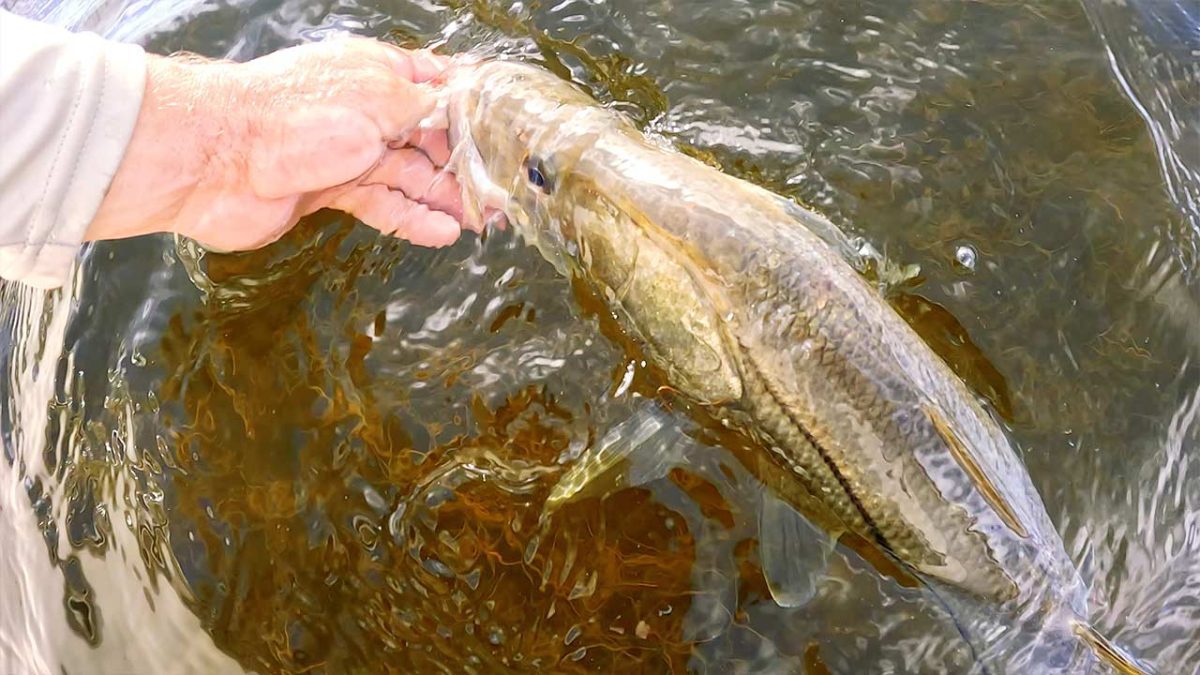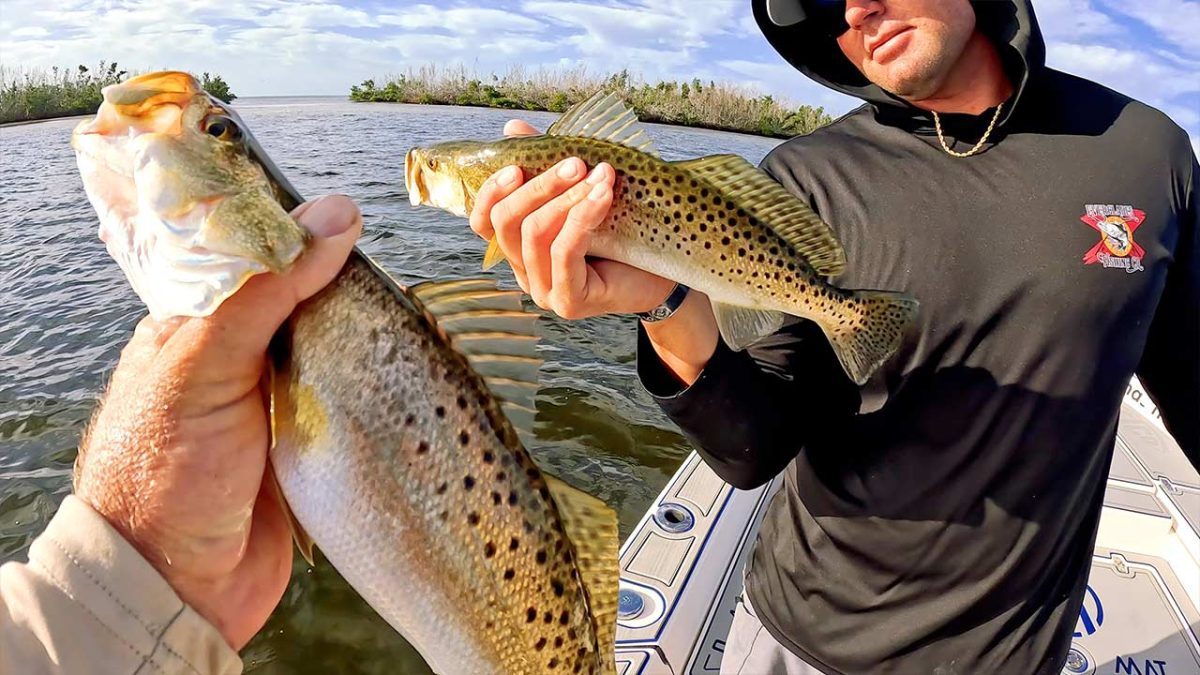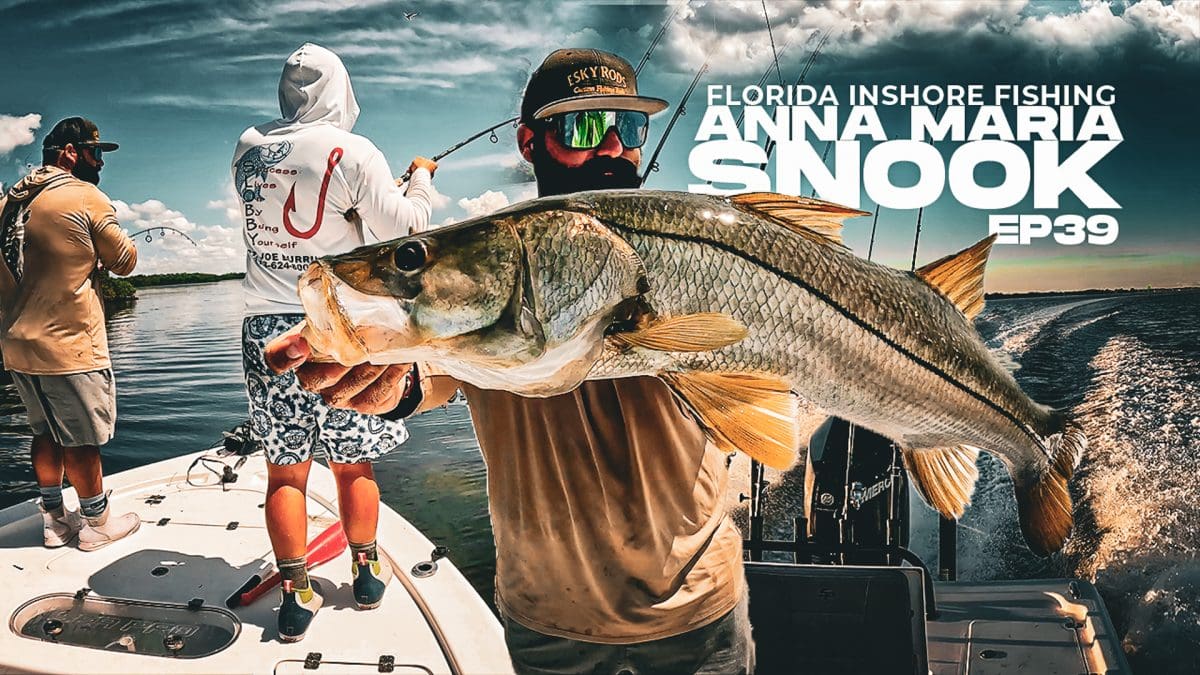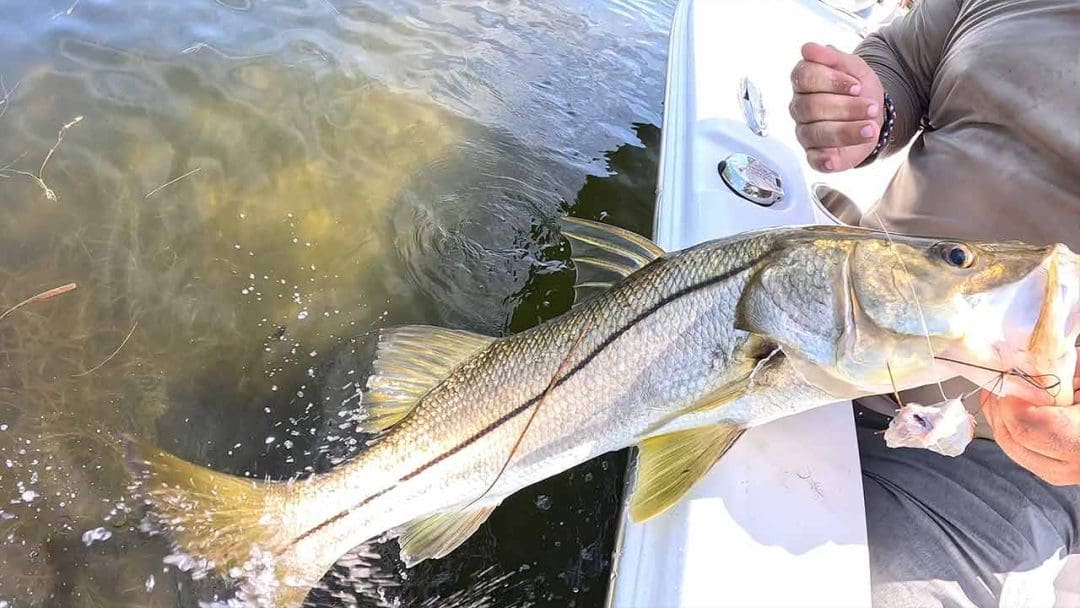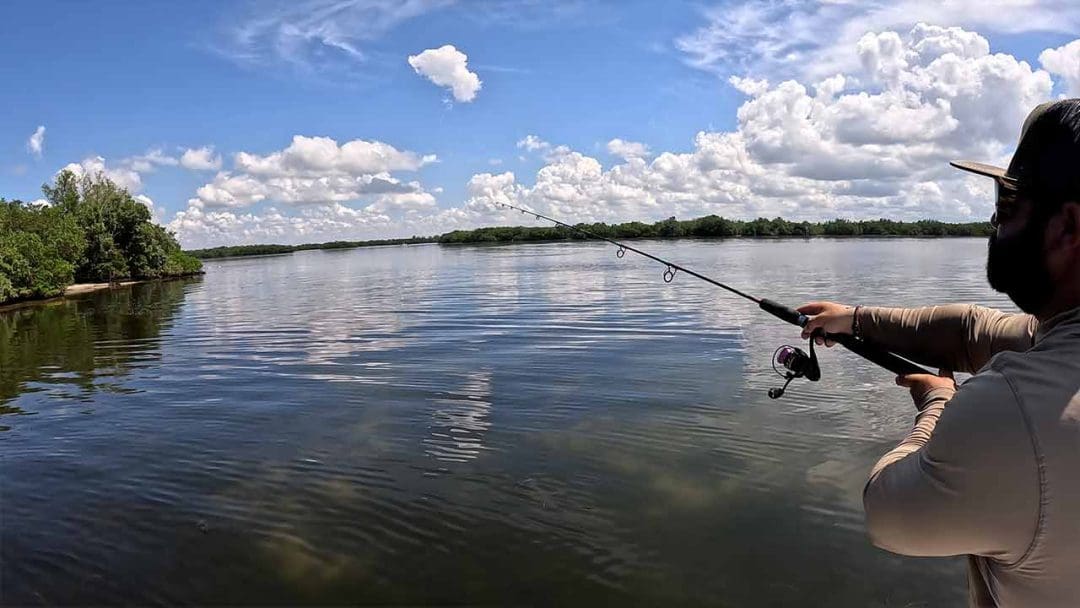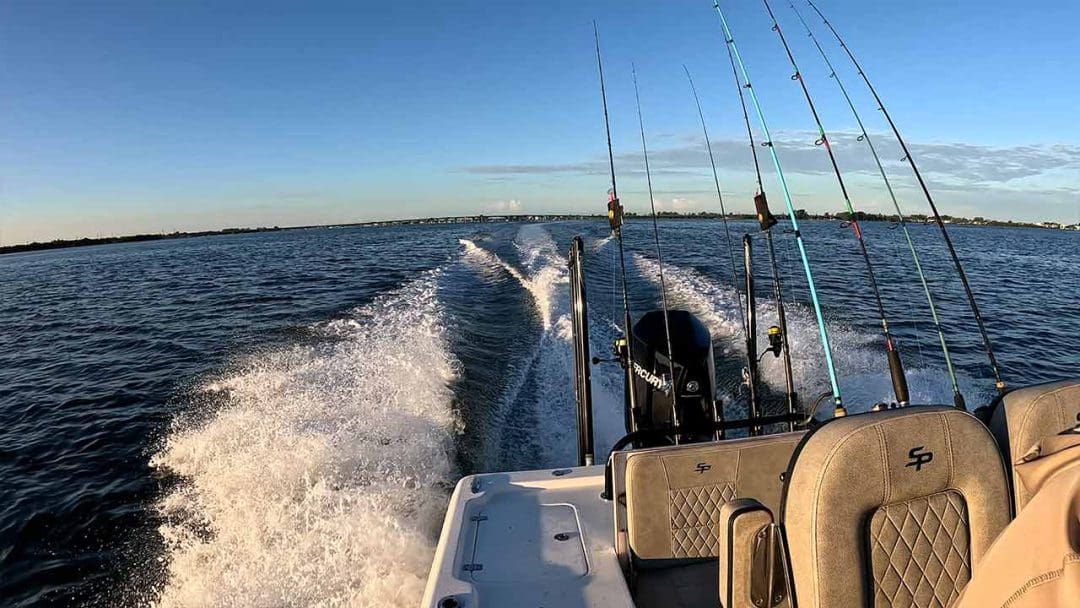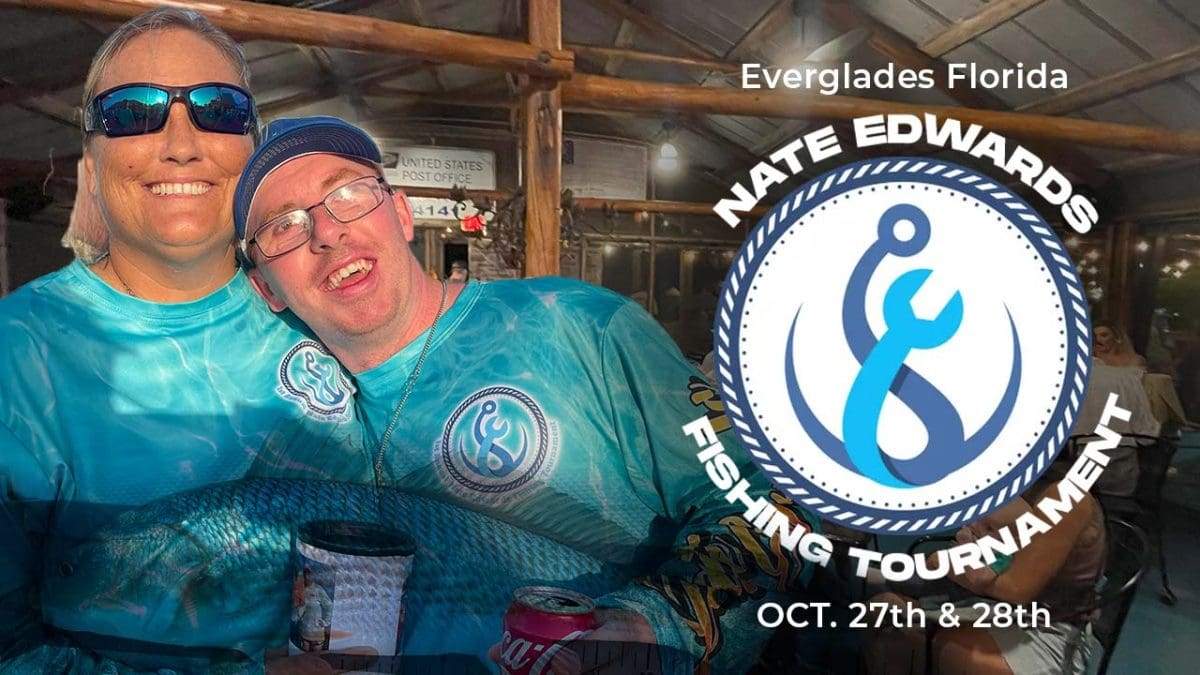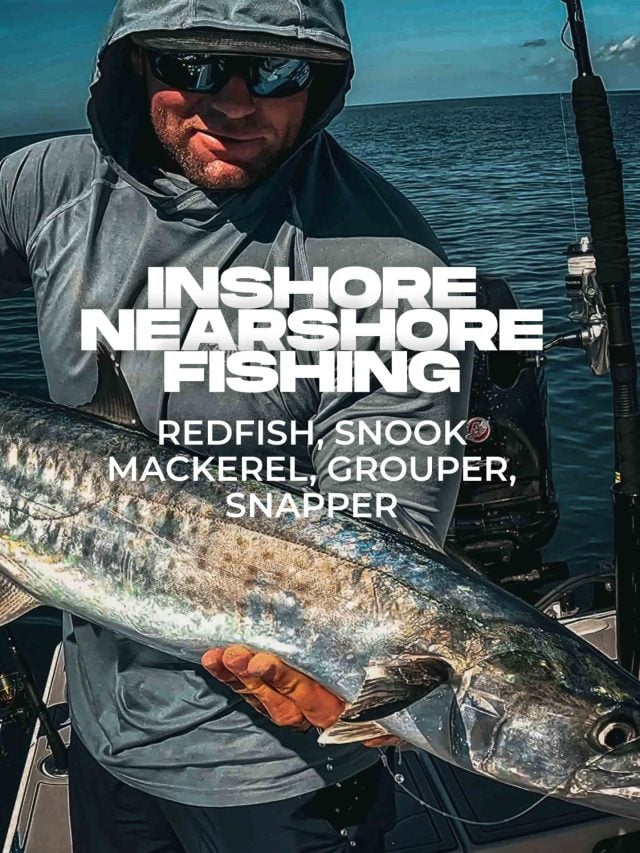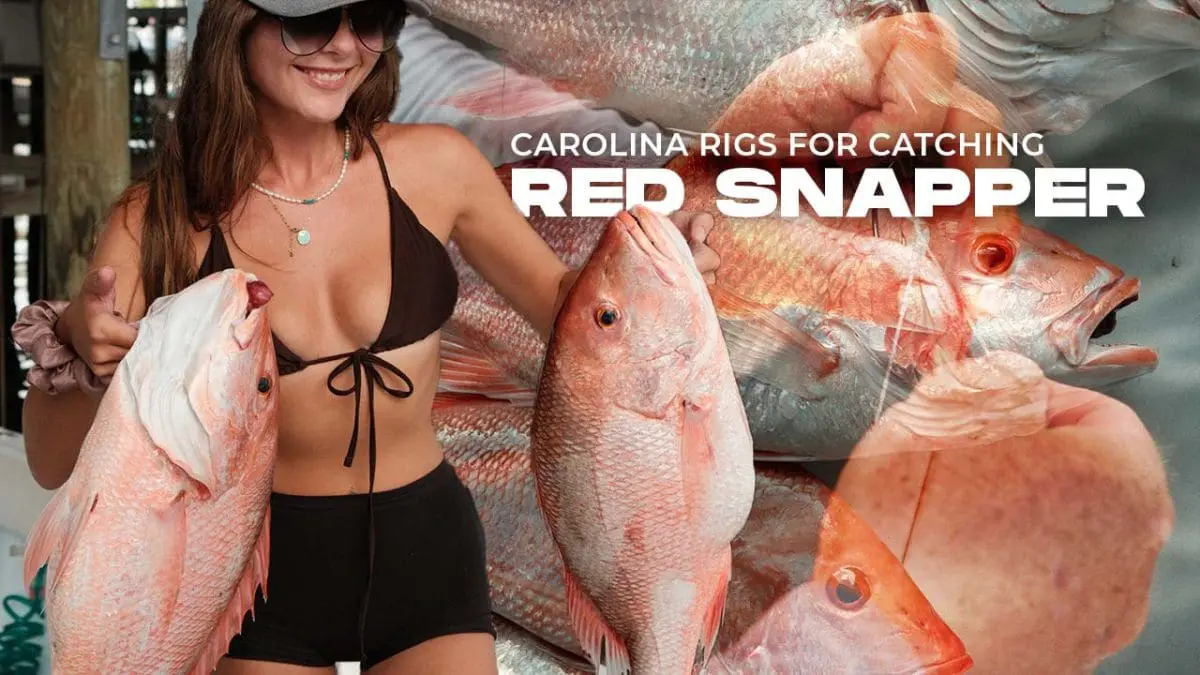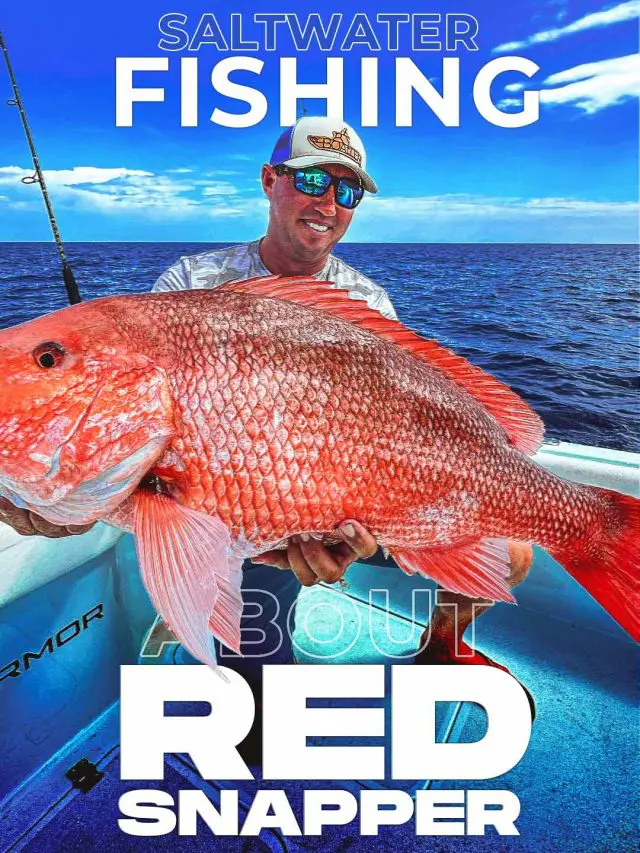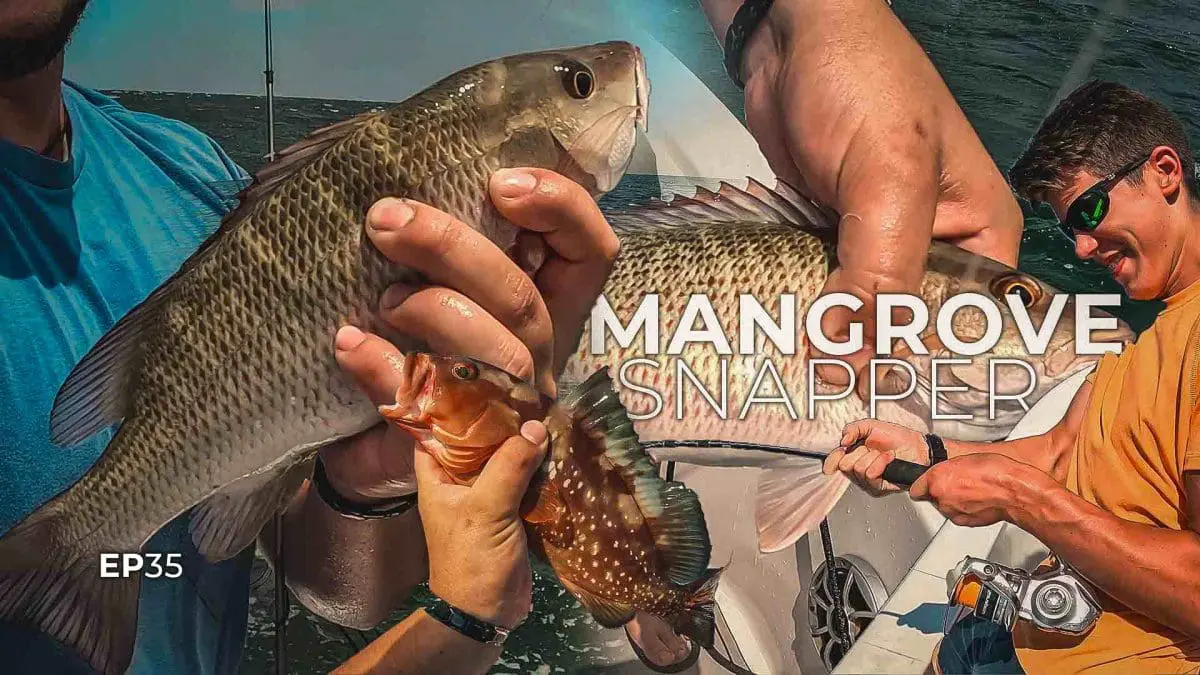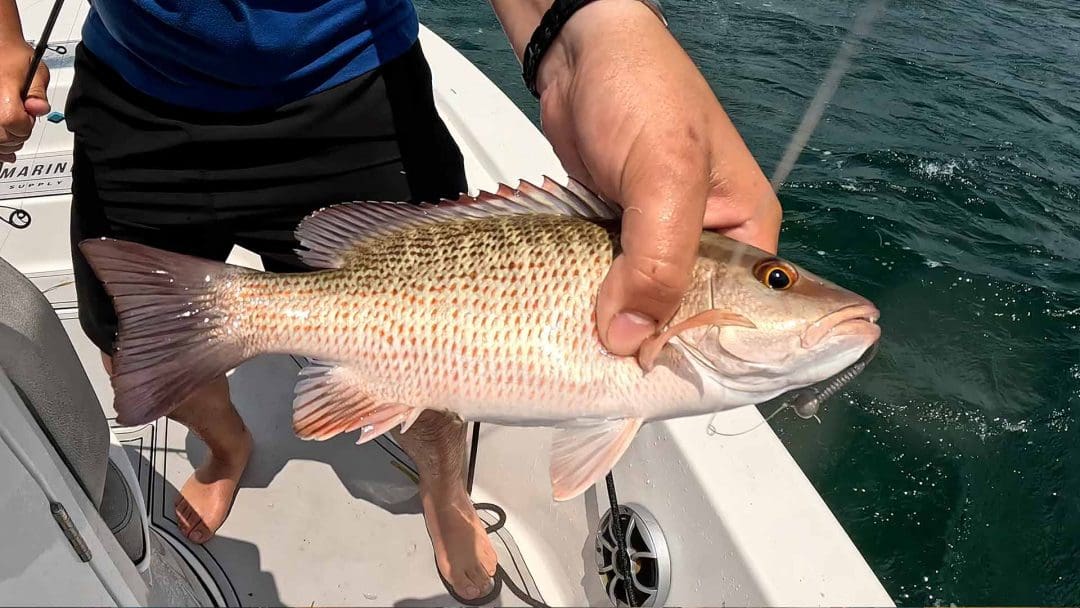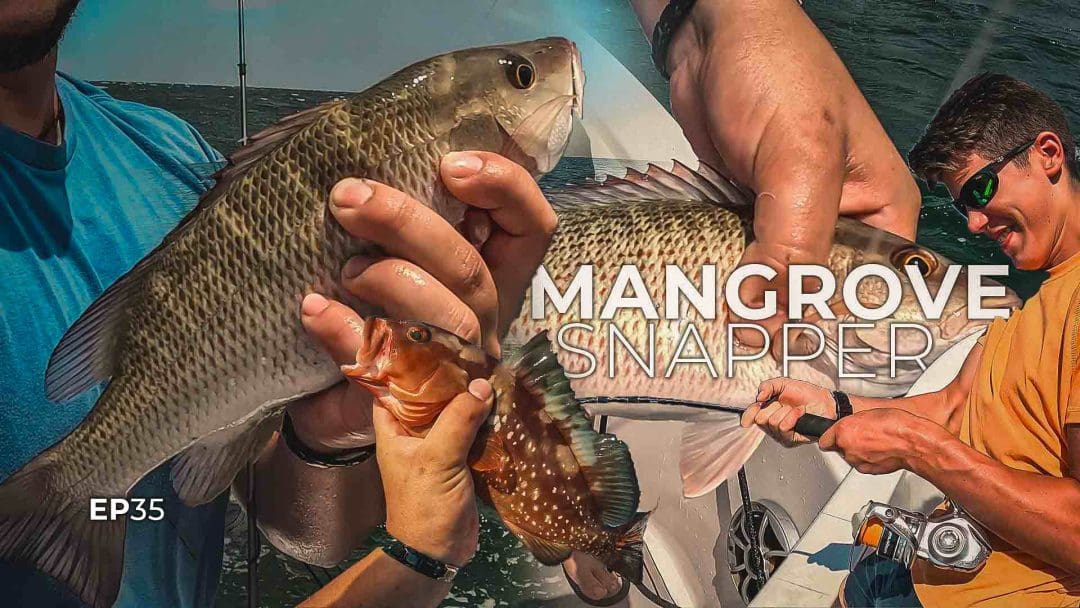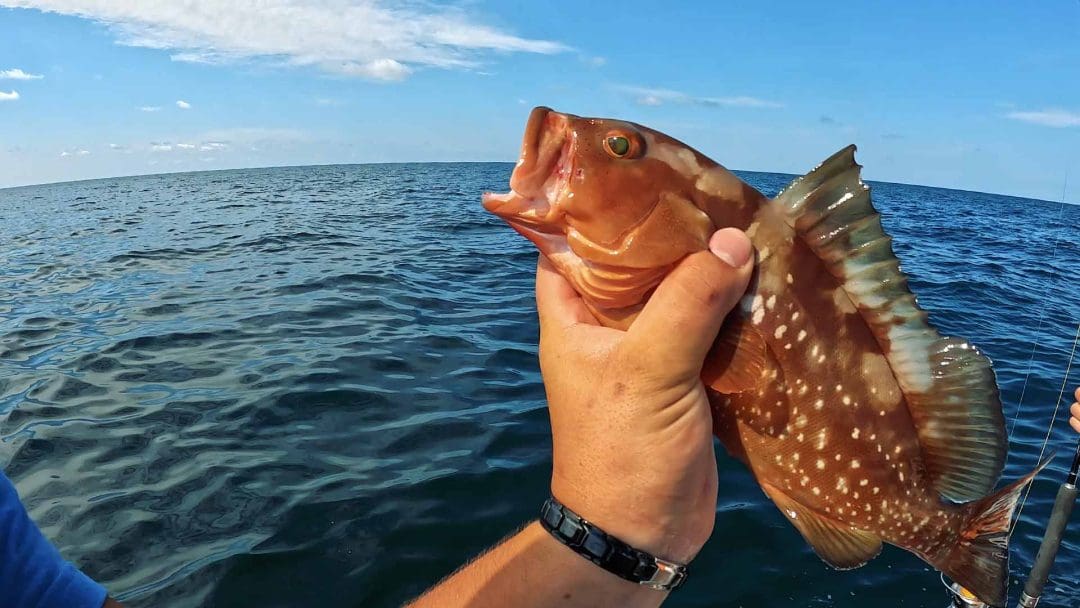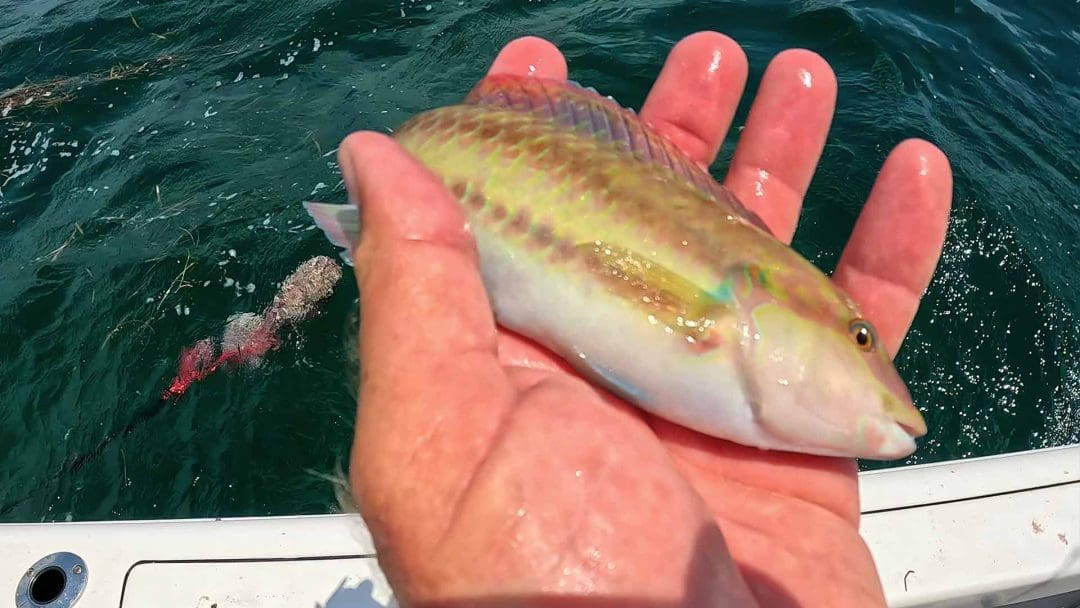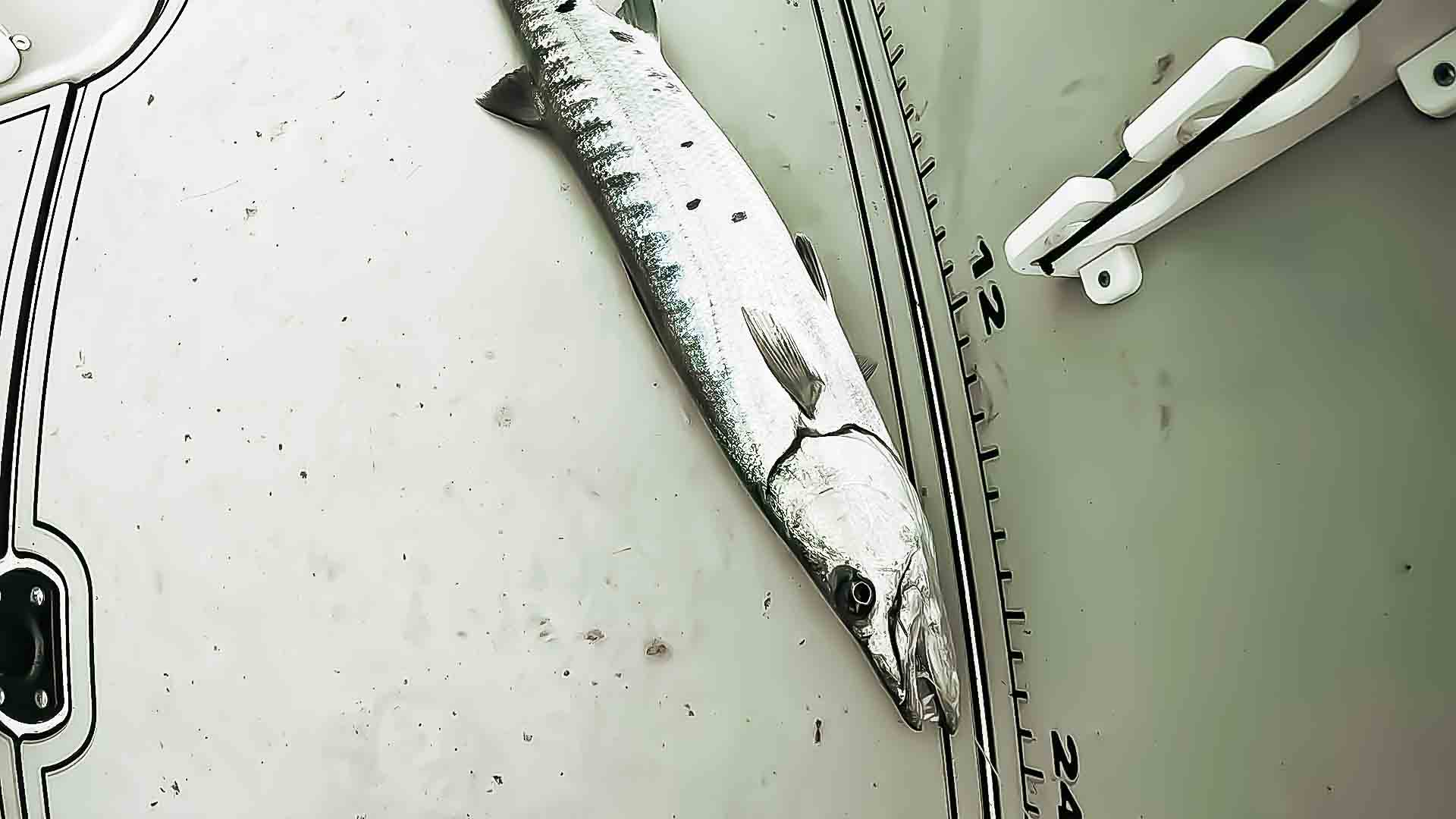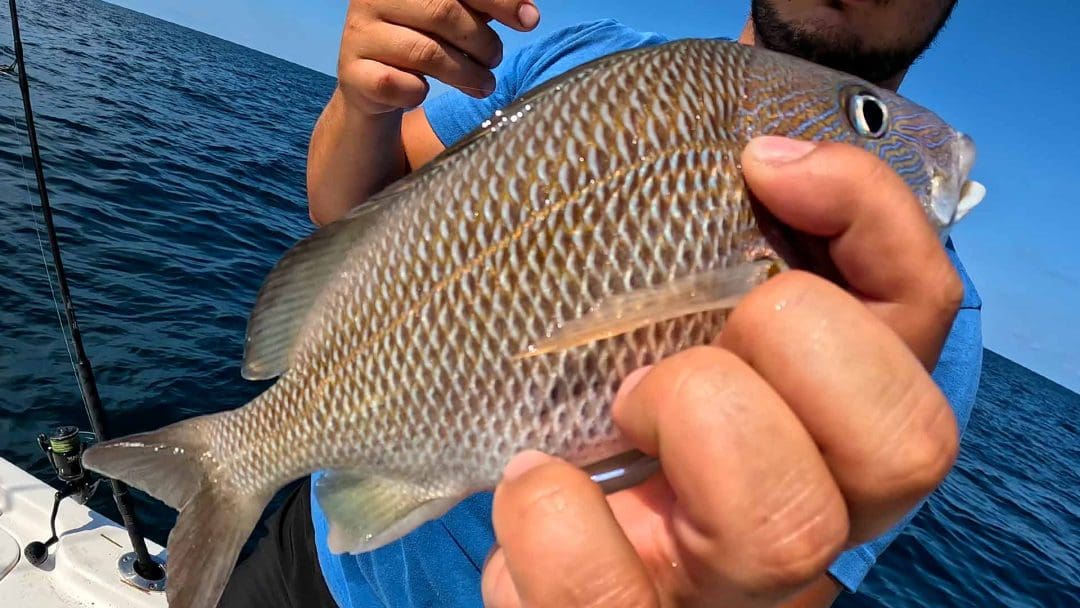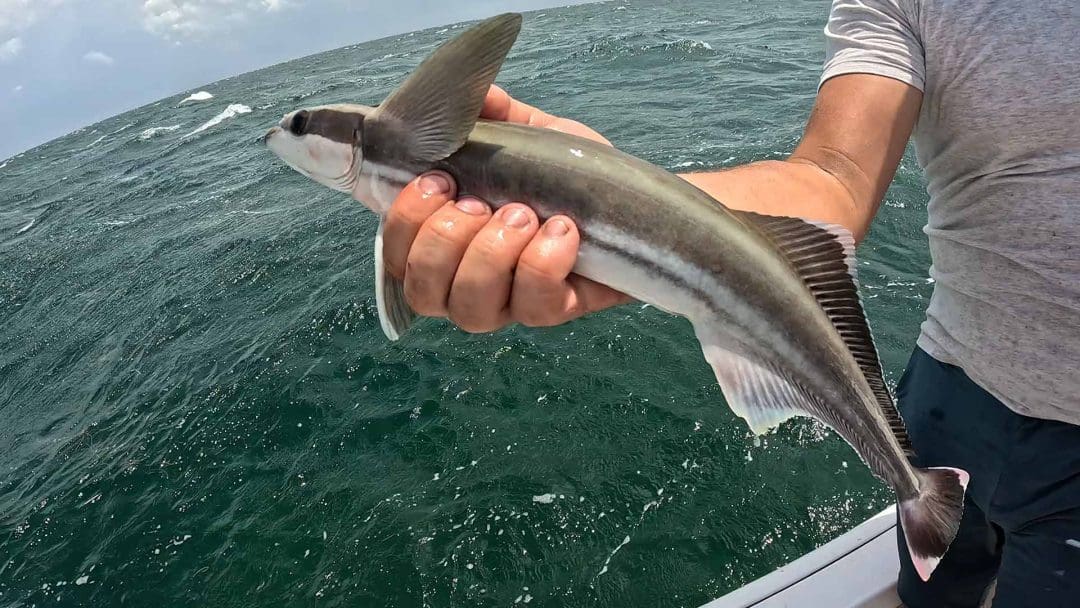Louisiana Catch and Cook Gulf Coast Redfish
Episode 44 Inshore Redfish Catch and Cook showcases the charm and challenge of fishing in one of Louisiana’s premier destinations.
Watch Episode: Redfish Catch and Cook Delacroix Louisiana
Locating Inshore Redfish Hotspots
Delacroix, Louisiana, stands out as a popular location for fishing enthusiasts. Its rich waters and diverse ecosystems make it an ideal spot for catching redfish, a sought-after species among anglers. The area’s unique blend of salt and fresh water creates a habitat where redfish thrive, offering an exciting fishing experience.
Catch and Cook: Blackened Redfish
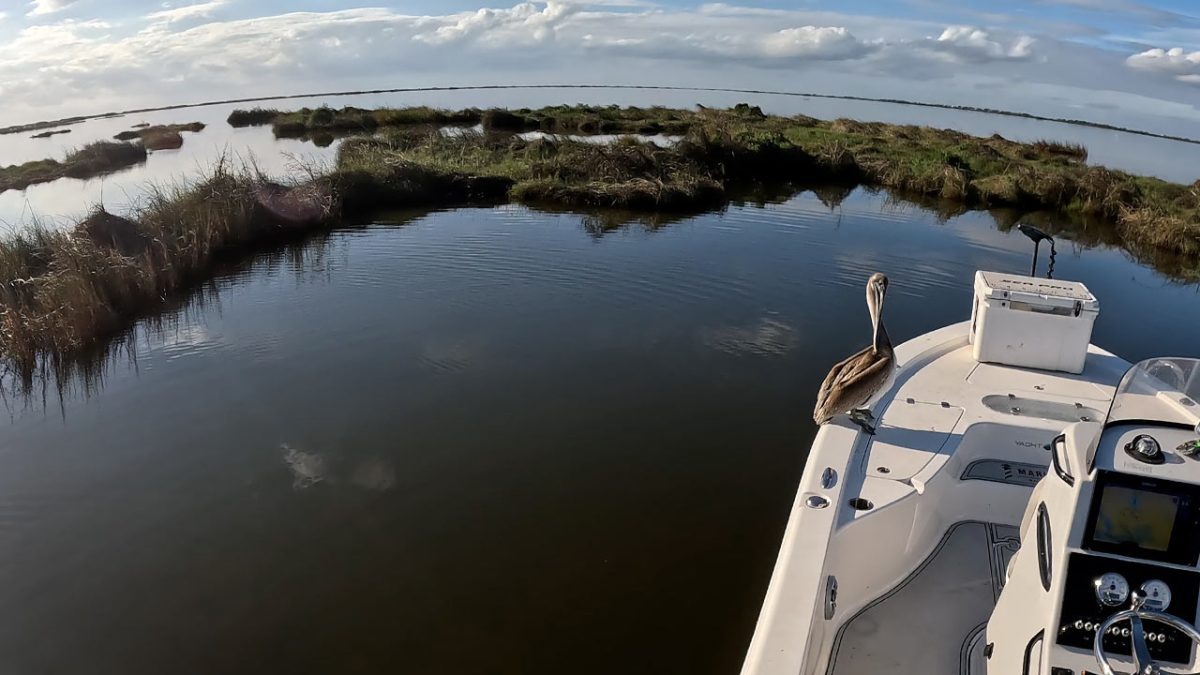
Effective Redfish Fishing Methods
Captain Randall demonstrates the effectiveness of various fishing techniques. Using soft plastic baits for sight fishing along banks, a method that requires a keen eye, polarized fishing sunglasses, skill and patience. Gold spoons, another favored tool, are perfect for covering larger areas and attracting redfish with their reflective properties.
When these methods prove challenging, live shrimp below a popping cork come into play, a tried-and-true technique that seldom disappoints.
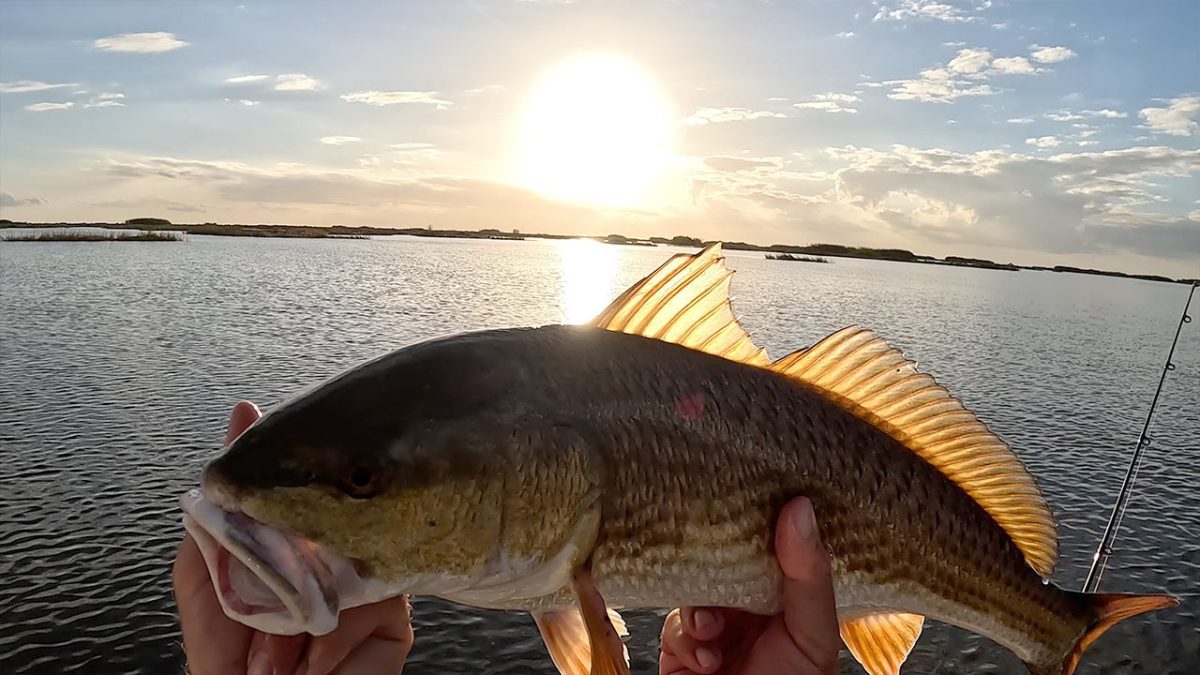
The Catch of the Day: Louisiana Redfish
The highlight of the episode is the successful catch of several decent-sized Louisiana redfish. These powerful fish provide a thrilling challenge for any angler.
Common Fish in Delacroix, LA
Redfish (Red Drum):
Best Time: Year-round, with peaks in spring and fall.
Speckled Trout (Spotted Seatrout):
Best Time: Late spring to early fall, peaking in May and June.
Flounder:
Best Time: Fall, especially in October and November.
Black Drum:
Best Time: Late winter through spring, peaking in March and April.
Sheepshead:
Best Time: Late winter and early spring, especially from February to April.
Redfish Catch and Cook:
This adventure concludes Dockside at Sweetwater Marina in Delacroix, where the day’s catch (redfish) is cleaned, prepared, and cooked. Embracing local culinary traditions, the team uses Zatarain’s, a local favorite seasoning, to fry up our catch.
From Bayou to Table
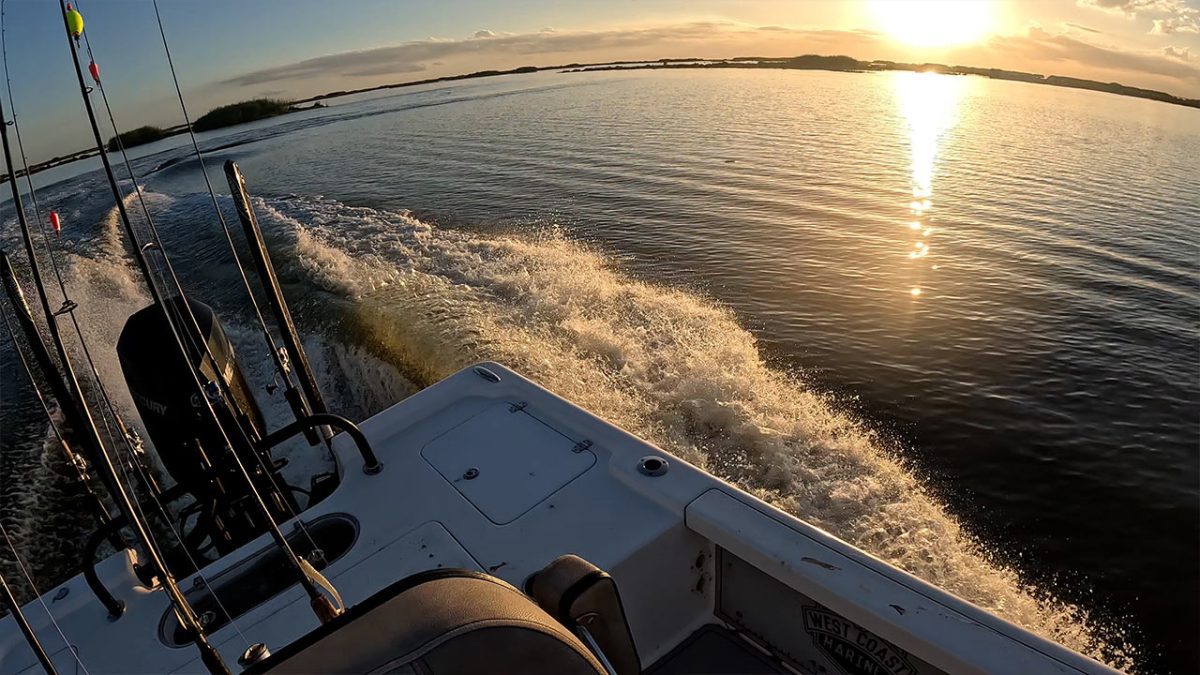
Gulf Coast Angler: Local Louisiana Fishing Guides
For those inspired to embark on their own fishing adventure in Delacroix, local fishing guides like Louisiana Fishing Charters offer personalized experiences. These experts provide invaluable insights into the local fishing spots, techniques, and everything needed to make a fishing trip successful and enjoyable.

Zatarain’s Deep Fried Redfish Recipe
Cajun Favorite Fried Redfish Recipe
A simple and delicious deep-fried redfish recipe option using Zatarain’s battered fish fry.
Zatarain’s Battered Redfish Ingredients:
Easy Redfish Recipe with a DEEP FRYER or Pan Frying
2 redfish fillets, about 1 inch thick
1/4 Cup Buttermilk or Favorite Alternative
Frying Oil
Deep Fried Redfish Cooking Instructions:
Redfish Recipes: Deep Fryer
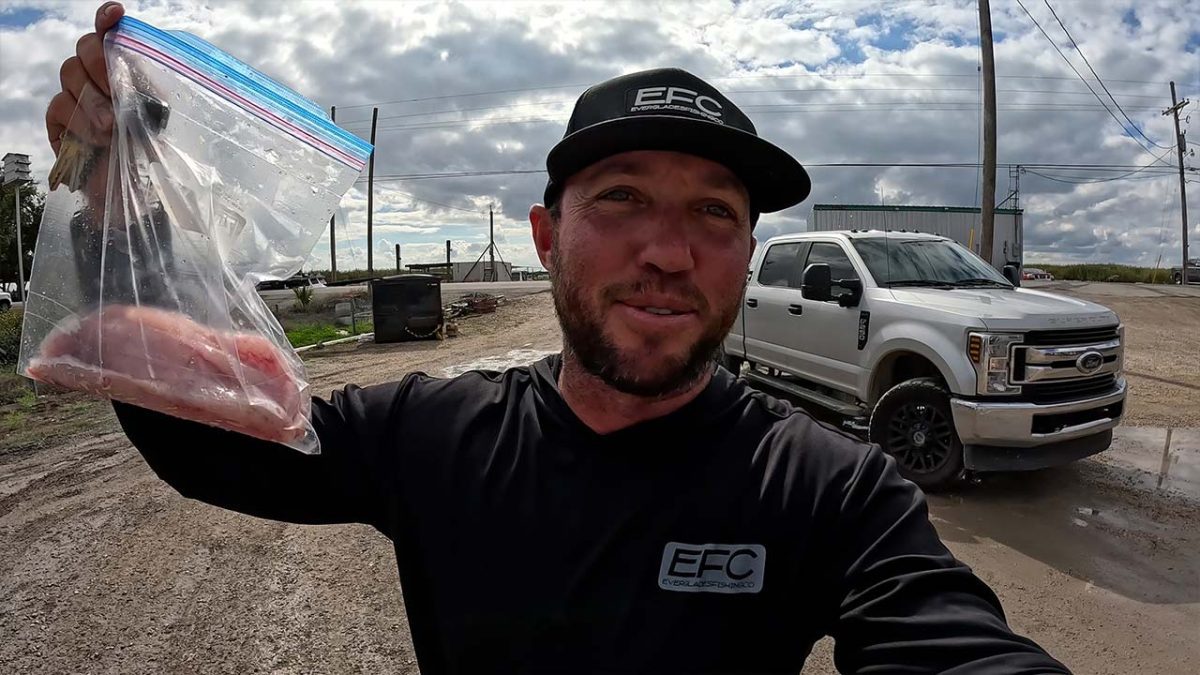
Preheating Oil
Preheat oil to approx. 350 degrees Fahrenheit.
Preparing your Redfish Filets
Clean your, rinse and pat dry your redfish filets
Soaking Filets (Buttermilk)
Once dry soak filets in Buttermilk or your choice of alternative.
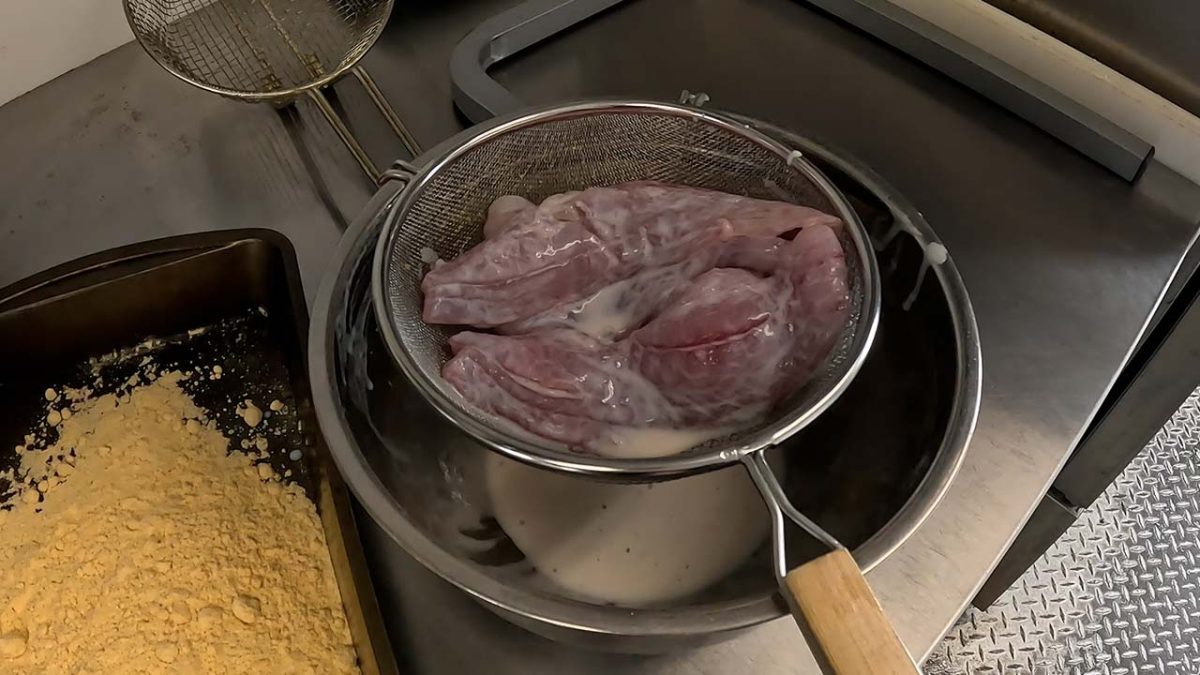
Drain Excess Buttermilk
Remove from Buttermilk and drain the excess liquids off.
TIP: Keep one hand dry and the other wet so you don’t end up with a mess of batter on your fingers.
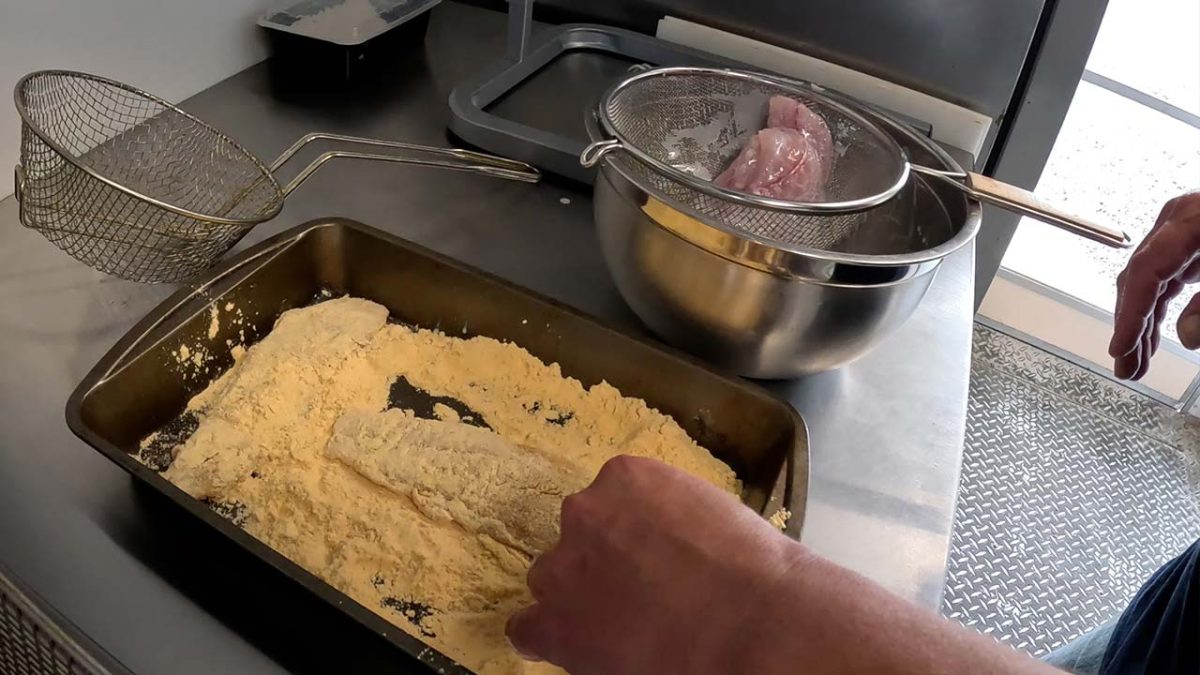
Generously Coat Redfish Filets (Shake Off Excess)
Generously coat both sides and set aside until oil has reached temperature.
Deep Frying Battered Redfish
Once the oil is at temp, slowly lower filets into oil one by one. If in a deep fryer give a few seconds before putting in the next to help avoid filet breading getting stuck to one another.
Deep Frying Battered Redfish
As the filets cook they will begin to float to the surface
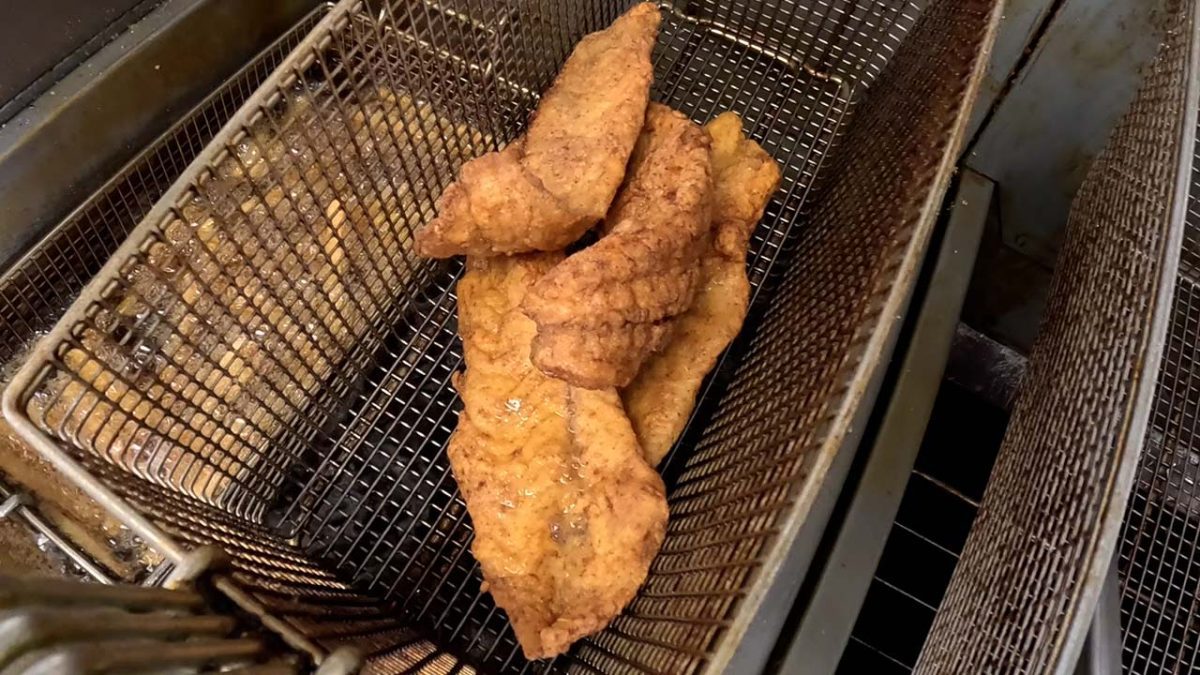
Battered and Cooked Redfish
Once filets begin floating, keep a close eye on them at this point. Cook filets for 3-4 minutes or until floating and desired color is achieved.

**If your fillets are thicker than 1 inch, you may need to cook for longer.
Serve immediately, Serve with your favorite sides
Episode 44 with Captain Randall is more than just a fishing trip; it’s an experience into the heart of Louisiana’s fishing culture, showcasing the thrill of catching redfish in Delacroix and the joy of savoring the day’s catch.
Whether you’re an experienced angler or a curious novice, Delacroix’s waters are waiting to be explored.
Explore More
Fishing Anna Maria Nearshore Reefs
Going Fishing in Anna Maria, FL
When it comes to fishing, there’s something undeniably thrilling about the pursuit of big game species like kingfish, goliath grouper, tuna, sharks, and pelagic species.
Anna Maria Island (AMI) offers a unique opportunity for visitors interested in learning about and experiencing shark fishing. The local waters around AMI are inhabited by a variety of shark species, making it an ideal destination for fishing enthusiasts. This educational and incredible experience introduces anglers to the types of sharks found around the island.
Anna Maria Island Florida Fishing Charters
Watch Video: Nearshore Fishing Anna Maria | Shark
Ride along as Captains Randall and Joe fish nearshore reefs out of Anna Maria Florida
Anna Maria Island (AMI), located on the picturesque Gulf Coast of Florida, offers anglers an exceptional opportunity to land trophy fish through both inshore and nearshore reef fishing.

This exciting saltwater fishing adventure not only requires skill and patience but also involves a deep understanding of the target species and simply being prepared.

Anna Maria Spring Fishing Forecast 2024
About the Island – Exploring the AMI
Anna Maria Island, a slice of paradise in Florida, is renowned for its stunning beaches, quaint shopping areas, and an array of attractions that cater to every visitor. Among the most popular destinations is Bean Point, where you can enjoy serene sunsets and panoramic views of the Gulf.
Anna Maria City Pier
The historic Anna Maria City Pier offers a glimpse into the island’s past, along with fishing and dining with ocean views. For nature enthusiasts, the Leffis Key Preserve provides an escape with its boardwalks and native wildlife. The Bridge Street market in Bradenton Beach is a haven for shoppers and foodies, offering local crafts and delicious treats.
Coquina Beach
Coquina Beach, with its soft sand and crystal-clear waters, is perfect for a day under the sun. The Rod and Reel Pier combines historic charm with fresh seafood, making it a must-visit for dining. For a unique outdoor experience, the Robinson Preserve features kayaking through mangroves and scenic biking trails.
Holmes Beach
Holmes Beach, the heart of the island, is known for its family-friendly atmosphere and inviting sands. The Island Players Theater offers a cultural touch with its community-driven performances.
Lastly, the Anna Maria Island Historical Society Museum allows visitors to delve into the rich history of the island through its exhibits and preserved buildings. Each of these destinations showcases the diverse appeal of Anna Maria Island, making it an unforgettable getaway.
What fish can be caught around Anna Maria?
The best time to fish in Anna Maria, Florida, can vary depending on the species you’re targeting, as Florida offers excellent fishing opportunities year-round. However, some seasons are particularly well-suited for specific species.
Year-Round Fishing: Florida’s mild climate ensures that you can fish in Anna Maria throughout the year. Inshore species like snook, redfish, and trout are available year-round, offering consistent opportunities for anglers.
Spring: Spring is an exciting time for fishing in Anna Maria. This season brings the return of tarpon, one of the most sought-after game fish in the area. Tarpon migrate along the Gulf Coast, offering thrilling battles for anglers.
Summer: As the weather warms up, summer is ideal for targeting species like snook, redfish, and sharks. The warm waters of the Gulf provide excellent conditions for these species.
Fall: Fall is another great season for fishing in Anna Maria, with an abundance of grouper, snapper, and kingfish offshore. Inshore fishing remains productive for species like redfish and snook.
Winter: While it may be chilly elsewhere, Anna Maria enjoys relatively mild winters. This is an excellent time for sheepshead, black drum, and shark fishing.
Year-Round Offshore: Offshore enthusiasts can find exciting opportunities year-round. Species like grouper, snapper, and amberjack are available throughout the year, with some variations in their activity levels.
Anna Maria, FL Reef Fishing EP 43
Florida’s Seasonal Fishing
Florida’s fishing is consistently good, but the best time to fish in Anna Maria can vary depending on your target species.
Each season presents unique opportunities, so it’s a good idea to plan your trip based on the specific fish you want to catch. Regardless of the time of year, Anna Maria’s stunning Gulf Coast waters offer a wide range of fishing experiences for anglers of all levels.
| Month | Common Fish Species |
|---|---|
| January | Sheepshead, Black Drum, Shark |
| February | Sheepshead, Black Drum, Shark |
| March | Snook, Redfish, Shark |
| April | Snook, Redfish, Shark |
| May | Tarpon, Snook, Shark |
| June | Tarpon, Snook, Shark |
| July | Tarpon, Snook, Shark |
| August | Tarpon, Snook, Shark |
| September | Redfish, Snook, Shark |
| October | Grouper, Snapper, Shark |
| November | Grouper, Snapper, Shark |
| December | Sheepshead, Black Drum, Shark |

Catching Baitfish in Anna Maria (Cast Net)
One of the first steps in preparing for an Anna Maria nearshore reef fishing trip is catching baitfish.
These small fish serve as the primary food source for larger predators, forming the cornerstone of the marine food chain. Catching baitfish can be an adventure in itself, often involving the use of cast nets.
The flats and bridge legs around Anna Maria Island provide prime locations for gathering baitfish.
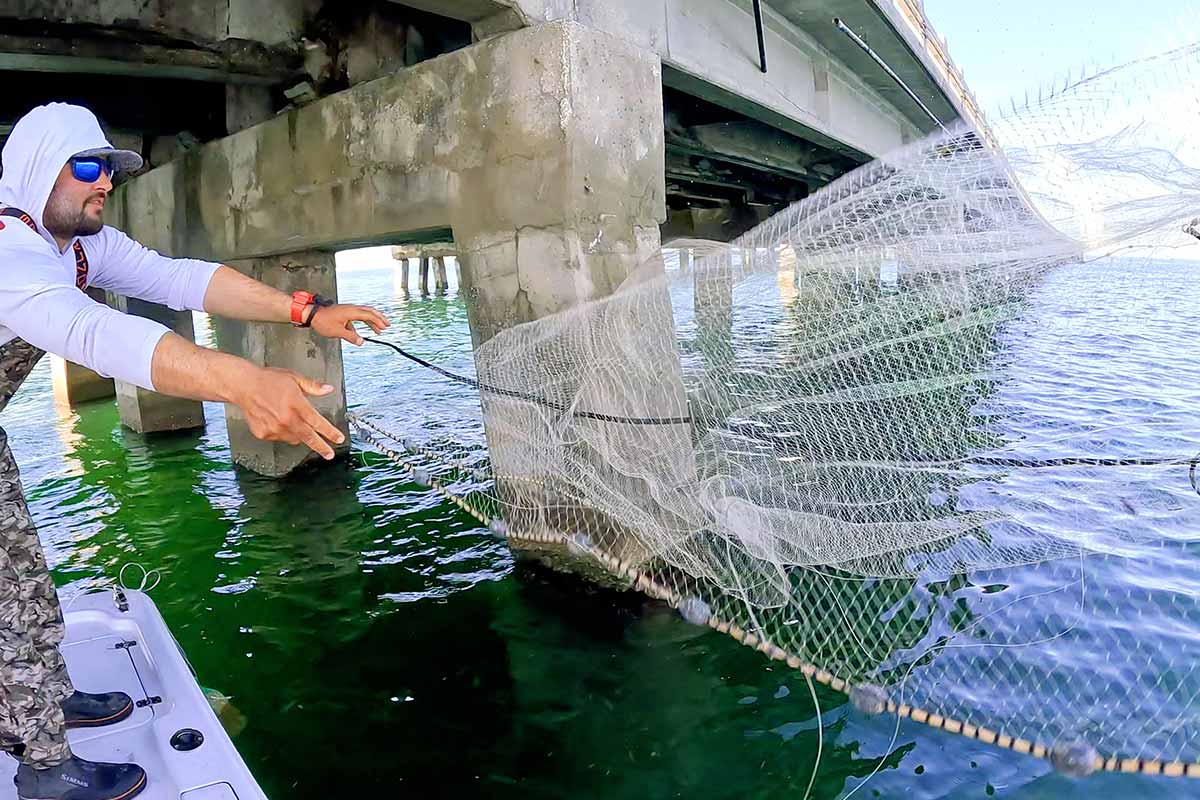
Using a cast net to catch baitfish involves a skilled throw that spreads the net wide and traps the baitfish as it sinks to the bottom. This technique requires practice and finesse, but it becomes an important skill for any angler targeting larger game fish.
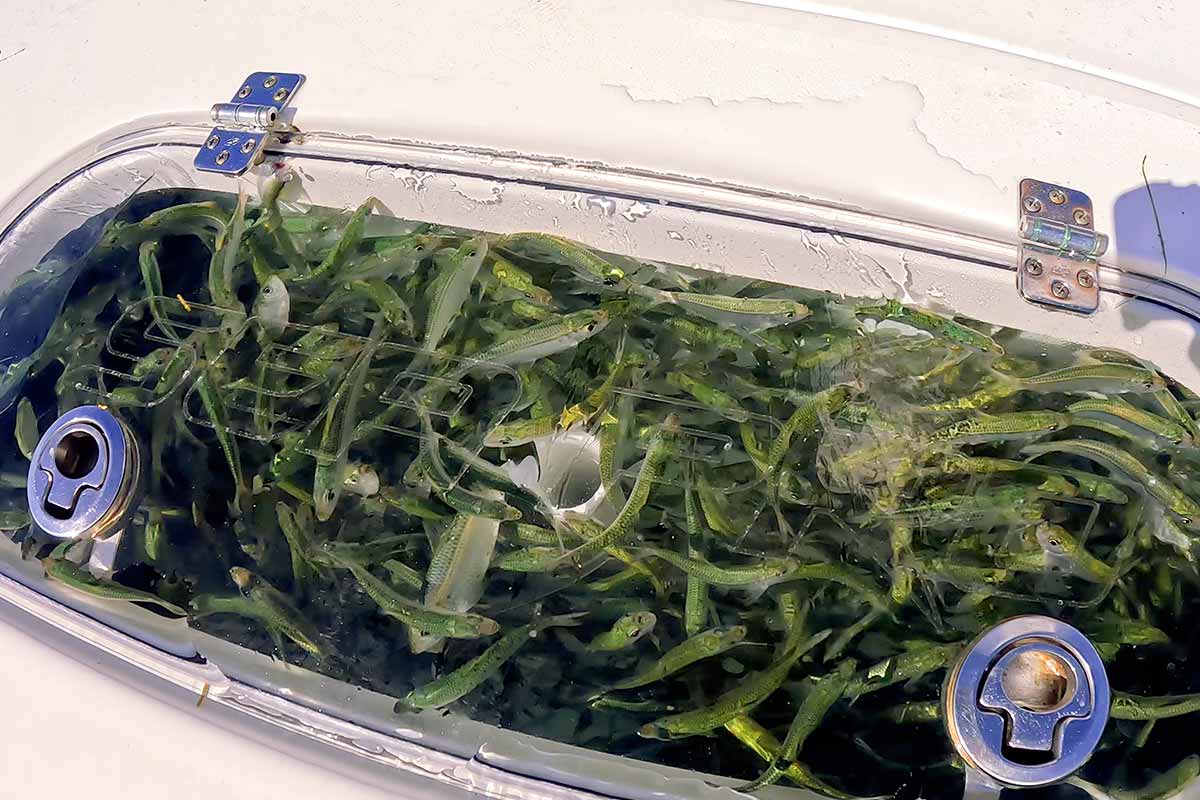
Common baitfish species used in Anna Maria nearshore reef fishing include threadfin herring, scaled sardines, pinfish, and cigar minnows.
Catching Big Fish Florida’s Gulf Coast
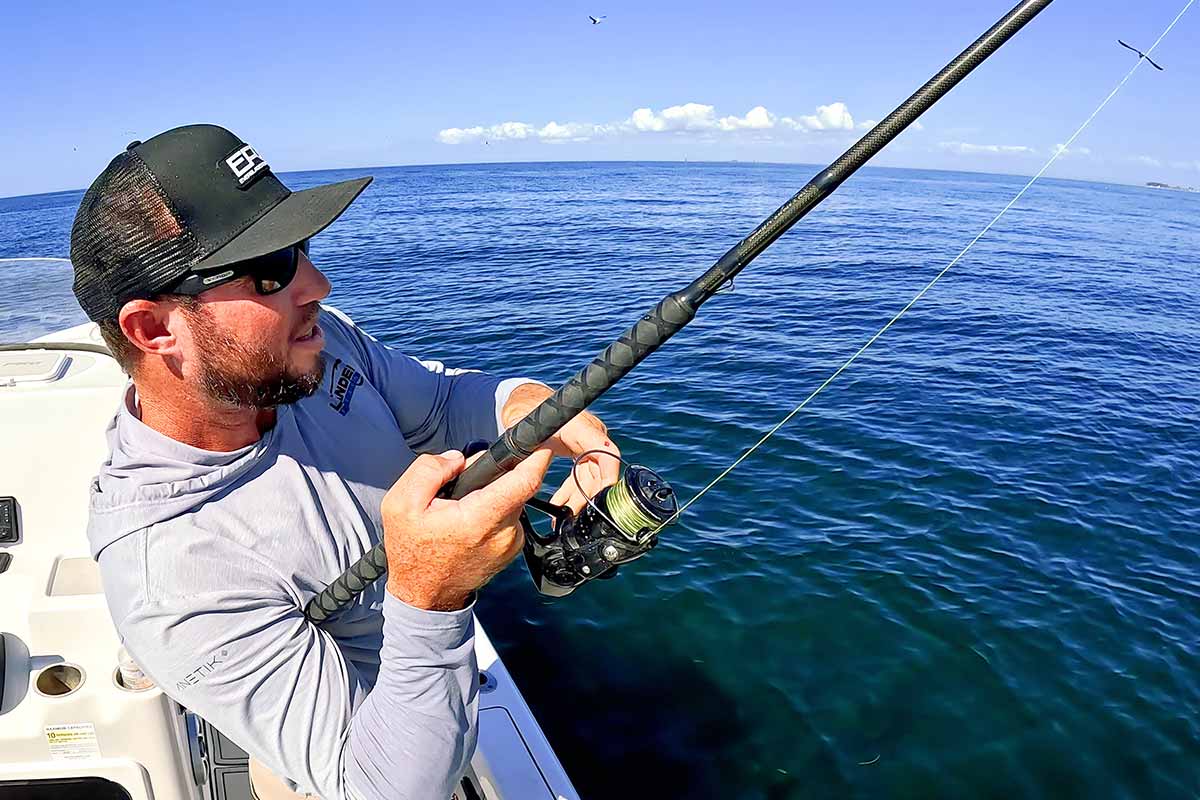
While smaller baitfish are essential for attracting and hooking smaller predators, when targeting larger species like kingfish, goliath grouper, tuna, sharks, and pelagic species, the need to increase bait size becomes paramount.
These formidable fish are more selective in their prey and often require substantial baitfish or even live bait like large mullet, ladyfish, or blue runners to entice them.
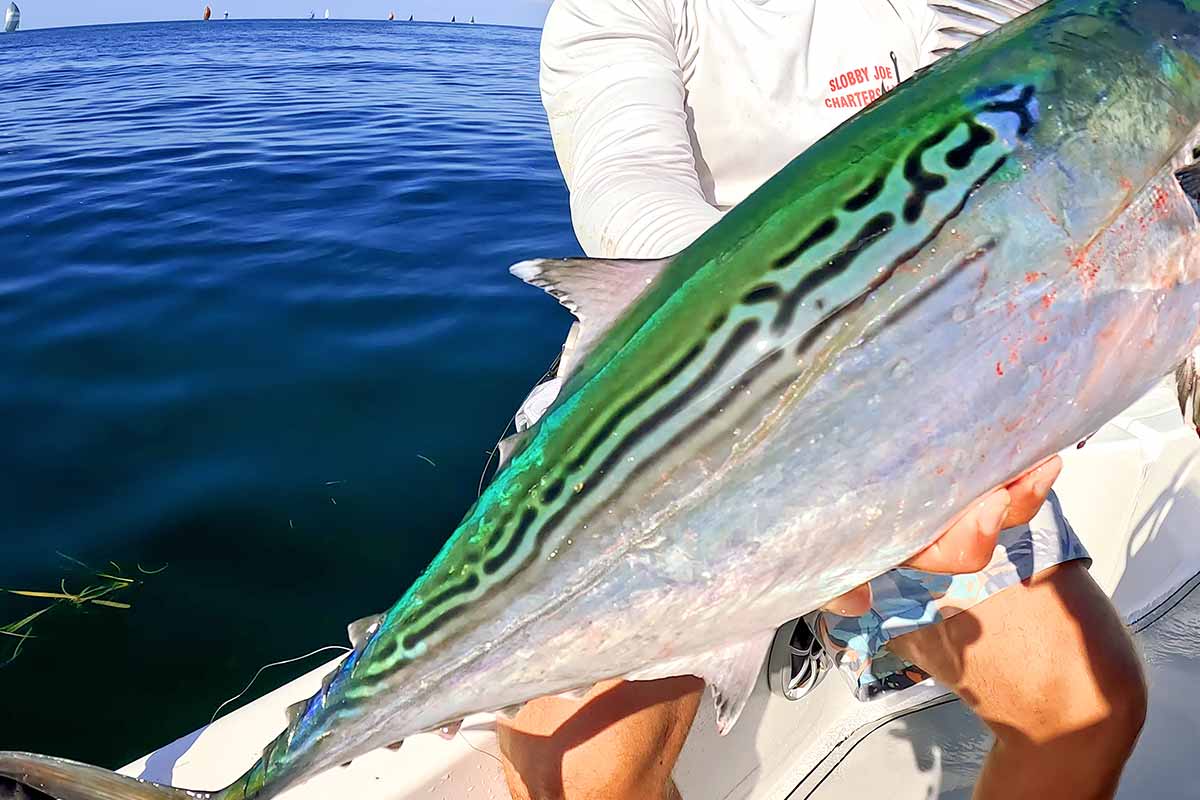
Big Fish Often Requires Big Bait
When fishing for kingfish, for example, using larger bait like blue runners or live Spanish mackerel can significantly increase your chances of success. These baits mimic the natural prey of kingfish and are more likely to elicit a strike from these speedy predators.
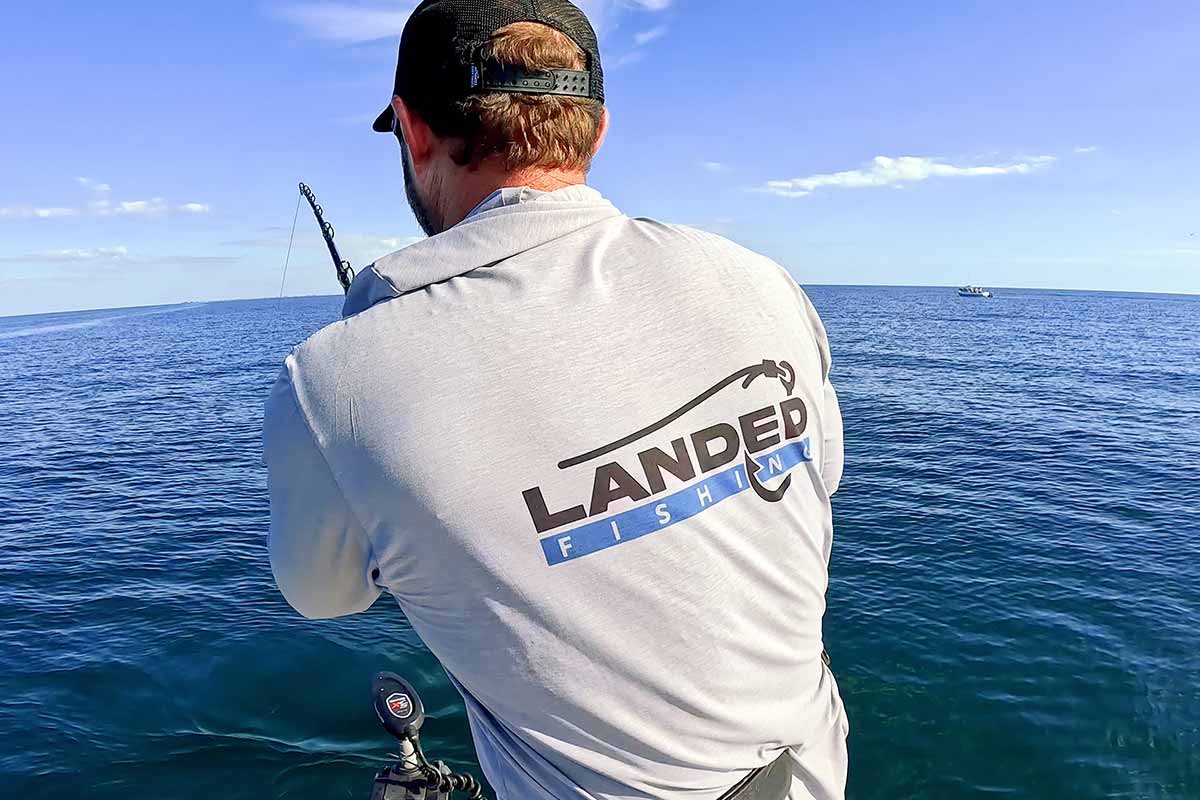
Goliath grouper, on the other hand, are colossal creatures known for their immense strength. To target these behemoths, it’s essential to use sizable live baitfish like large mullet or jack crevalle. These baits can weigh several pounds and provide the goliath grouper with a substantial meal.
A Proper Setup for Catching BIG Fish
Tuna, sharks, and pelagic species are renowned for their power and agility. To reel in these impressive game fish, you’ll need to employ a variety of techniques, including trolling with large lures, using live bait like bonito or Spanish mackerel, and even deploying chum to create a feeding frenzy.
Our Go-To Shark Fishing Gear & Setup
An “Unlimited” Reaper Fishing Rod + 250LB mono + 1,000LB Tackle
Learn More @: https://www.facebook.com/ReaperRods/
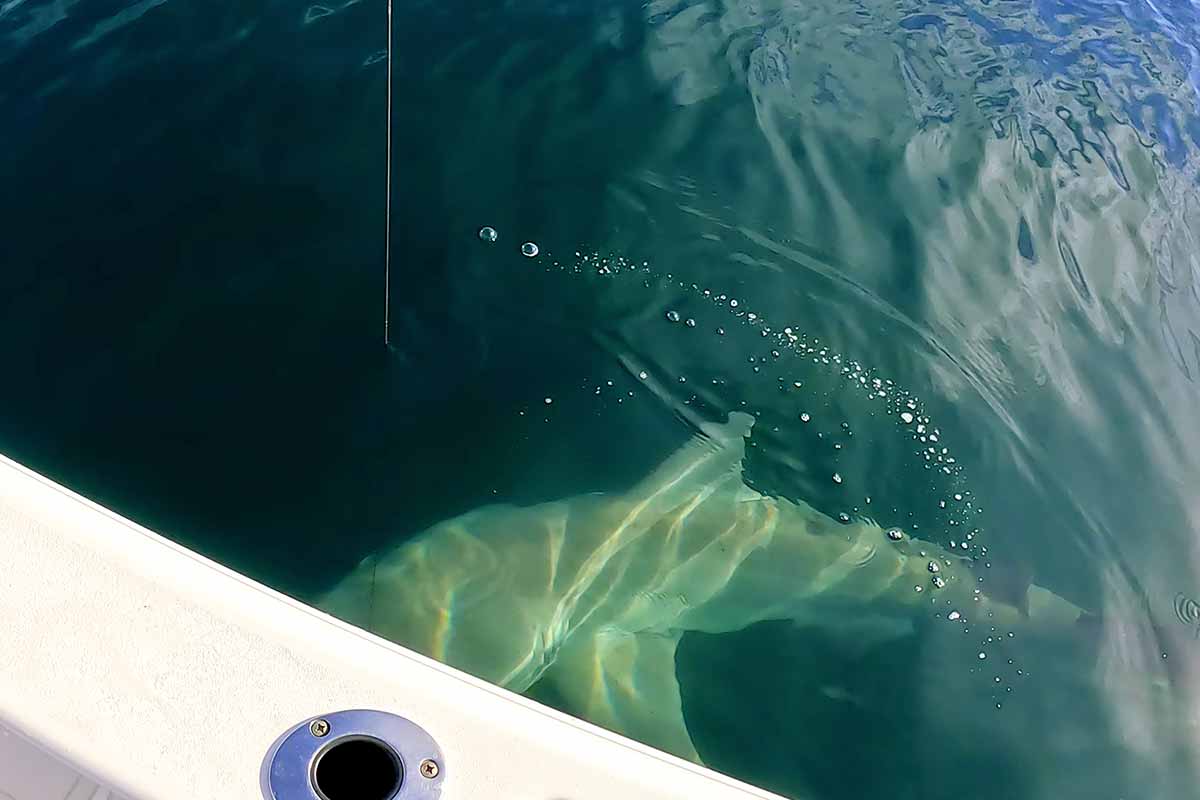
Anna Maria Island offers numerous opportunities for nearshore reef fishing, thanks to its proximity to the Gulf of Mexico. Reefs and wrecks scattered along the coastline provide prime habitats for these large predators.
As you drop your baitfish or live bait near these structures, you become part of the intricate marine food chain, where predators hunt prey, and the thrill of the chase reaches its peak.

Anna Maria Florida
Anna Maria, Florida, is a haven for saltwater fishing enthusiasts, attracting anglers from around the world with its pristine waters and diverse fish species. Situated on the Gulf Coast, Anna Maria offers year-round fishing opportunities. In the summer, you’ll find tarpon, snook, and redfish aplenty, making it a prime destination for inshore fishing.
Fall/ Winter Fishing Anna Maria Island & Bradenton, FL
As the weather cools down in the fall, the area becomes a hotspot for grouper, snapper, and kingfish offshore. Winter brings sheepshead and black drum, while spring sees the return of tarpon, as well as cobia and mackerel. With its pleasant climate and an abundance of game fish, Anna Maria consistently ranks among the top destinations for saltwater anglers seeking thrilling and diverse fishing experiences.
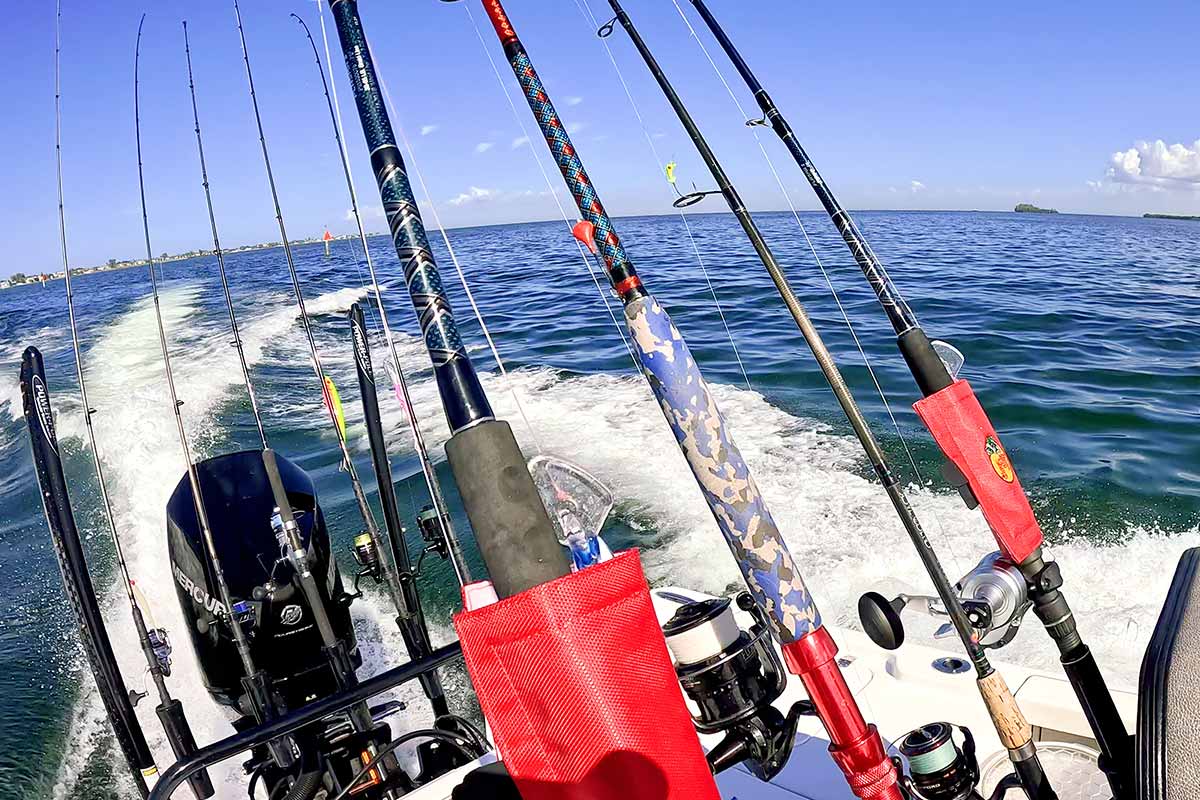
The excitement of battling a kingfish, goliath grouper, tuna, shark, or pelagic species in the waters surrounding Anna Maria Island is a dream come true for many anglers.
However, to make that dream a reality, it’s important to understand the significance both proper gear and bait size. So, next time you embark on an Anna Maria nearshore reef fishing adventure, remember that your preparedness can make all the difference in landing that trophy fish of a lifetime.
Gulf of Mexico Fishing Locations
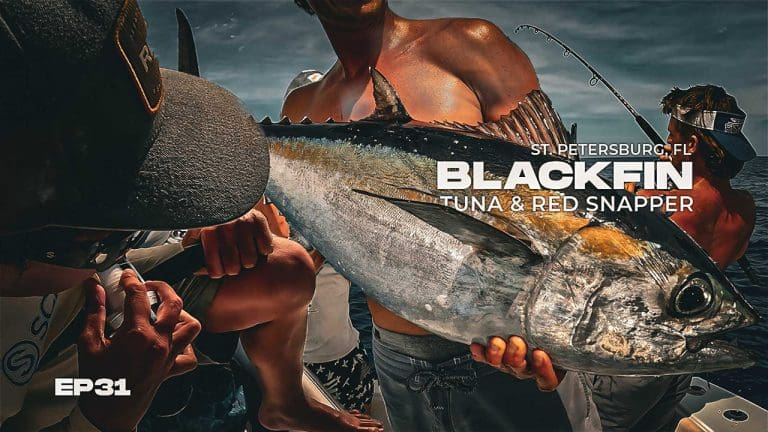
Blackfin Tuna Fishing in the Gulf Blackfin Tuna are powerful, action-packed fish to catch in the Gulf of Mexico,…
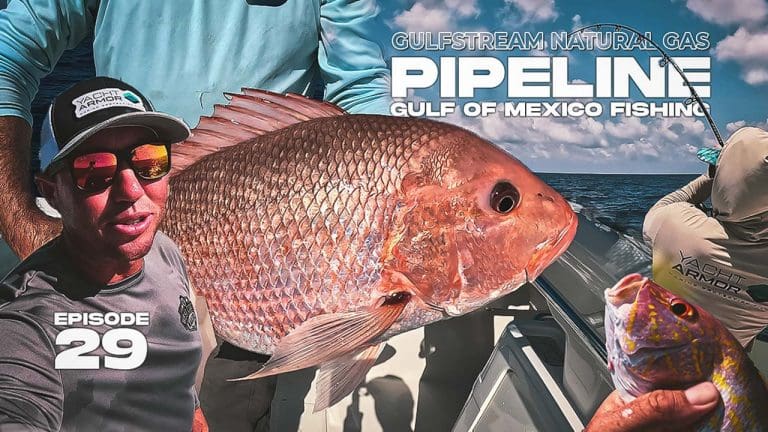
Fishing the Gulfstream Pipeline in the Gulf of Mexico Adventure awaits all anglers eager to venture out into the…
Fishing Boca Grande
Fishing Boca Grande, Florida:
Nestled on the picturesque Gulf Coast of Florida, Boca Grande is a renowned fishing destination that offers a wide range of angling opportunities for both beginners and seasoned fishermen.
Watch Video: Fishing Boca Grande Florida
To truly elevate your fishing experience in Boca Grande, consider reserving a trip with a reputable fishing charter captain. Let’s explore the various fishing opportunities in and around Boca Grande Florida, highlighting some of the area’s most sought-after species such as Redfish, Snook, Tarpon, King Mackerel, Snapper, Grouper and more.
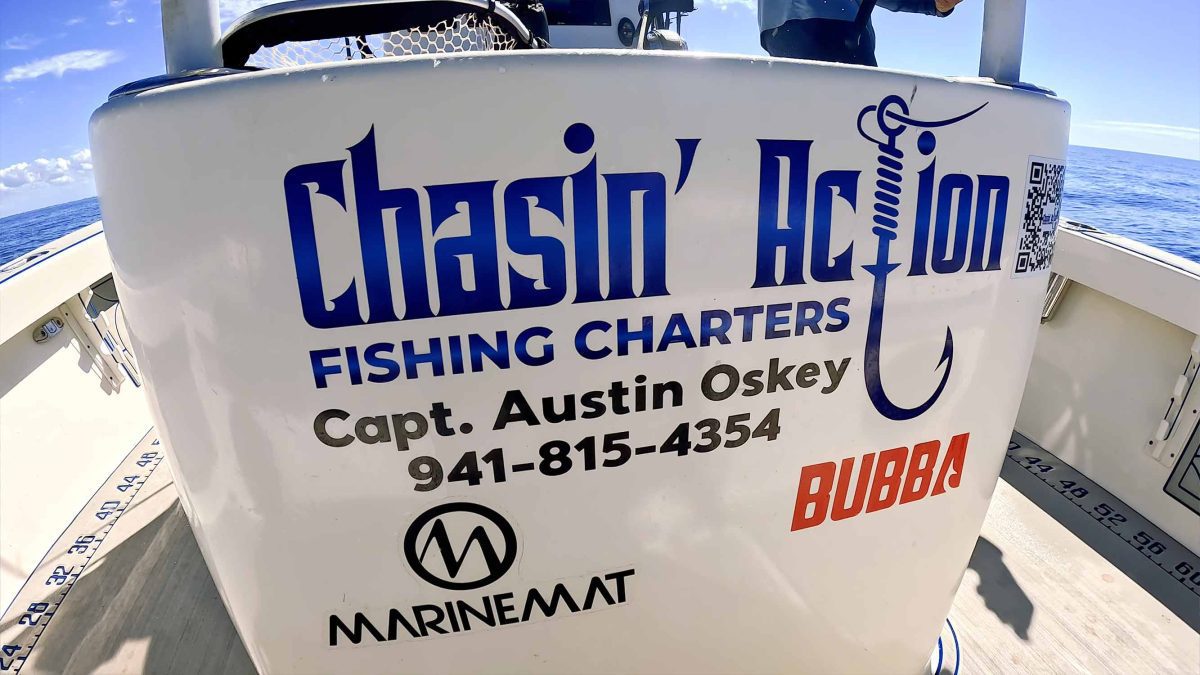
Known as the “Tarpon Capital of the World,” Boca Grande is a charming coastal town that draws anglers seeking to reel in a range of species, including redfish, snook, trout, tarpon, grouper, snapper, cobia, king mackerel, and more.
Chasin Action Fishing Charters, Boca Grande Florida
What to catch in Boca Grande Florida
The most common saltwater fish that anglers can catch in Boca Grande, Florida, along with their typical seasons.
| Fish Species | Season | Notes |
|---|---|---|
| Snook | Year-round | Popular sport fish, known for its fighting ability |
| Tarpon | April to July | Famous for its size and challenging catch |
| Redfish | Year-round | Favorable for its strong fight and taste |
| Spotted Seatrout | Year-round | Popular for both sport and table fare |
| Grouper | Year-round | Sought after for its meat, various species |
| Snapper | Year-round | Various species, prized for its taste |
| Pompano | October to March | Known for its speed and delicious taste |
| Kingfish | Spring and Fall | Known for its speed and game qualities |
| Barracuda | Year-round | Noted for its aggressive behavior and strength |
| Shark | Year-round | Various species, provides a thrilling experience |
| Mahi-Mahi | Year-round | Colorful fish, known for its leaping and speed |
| Tuna | Year-round | Includes various species, prized for sport and taste |
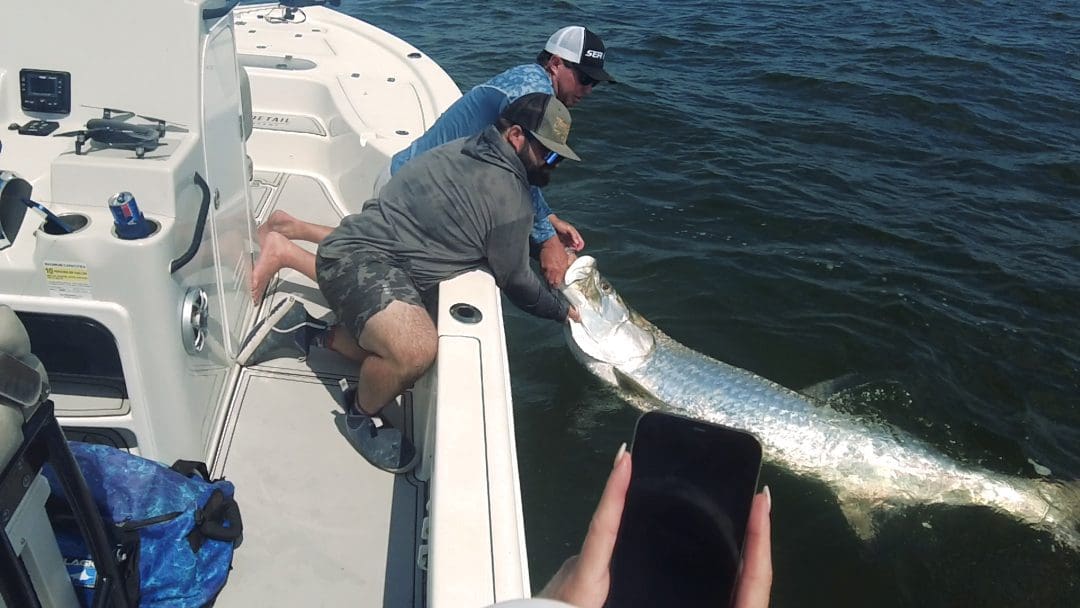
Tarpon: The Star of Boca Grande
Boca Grande’s reputation as the “Tarpon Capital of the World” is well-deserved. Every year, anglers from around the globe flock to these waters for the chance to tangle with the mighty silver king. Tarpon, known for their acrobatic leaps and incredible strength, are typically found in the Boca Grande Pass from April through July during their annual migration. Guided by experienced captains, you can experience the thrill of hooking into these massive fish.
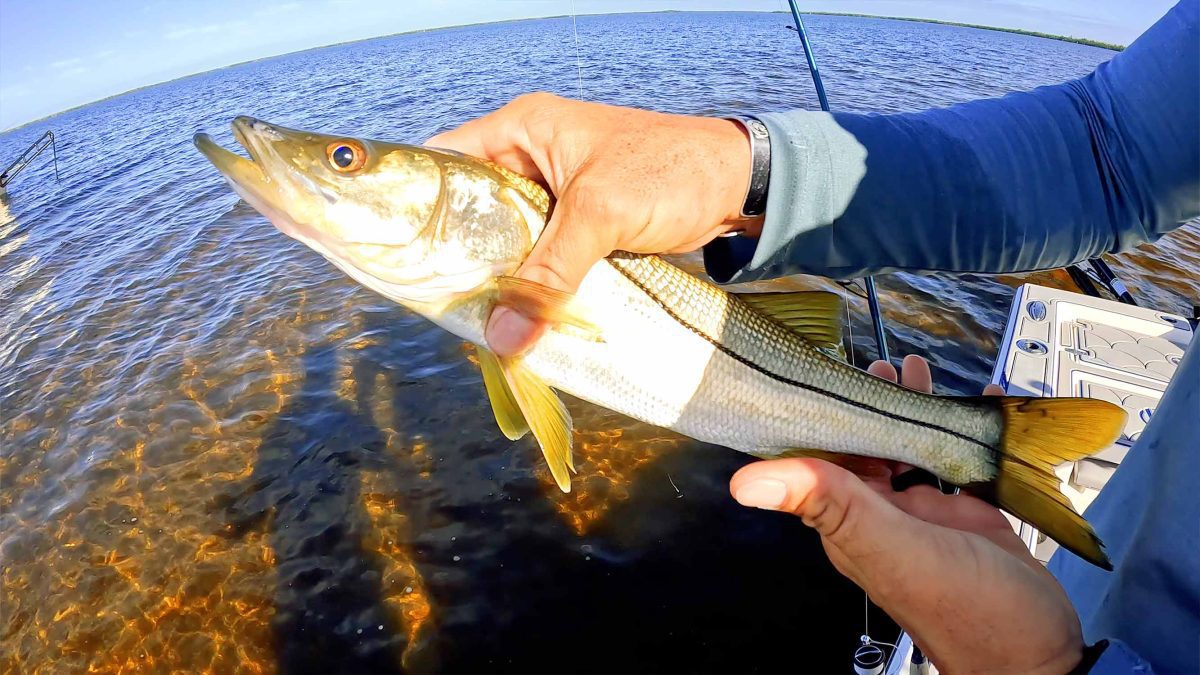
Boca Grande: Inshore Fishing
The inshore waters around Boca Grande offer fantastic opportunities to catch redfish, snook, and trout. Redfish are known for their copper-colored scales and powerful fights, while snook are prized for their challenging behavior and delicious taste. Trout, on the other hand, provide excellent table fare and can be caught year-round. Inshore fishing charters are readily available and are an excellent choice for anglers of all skill levels.
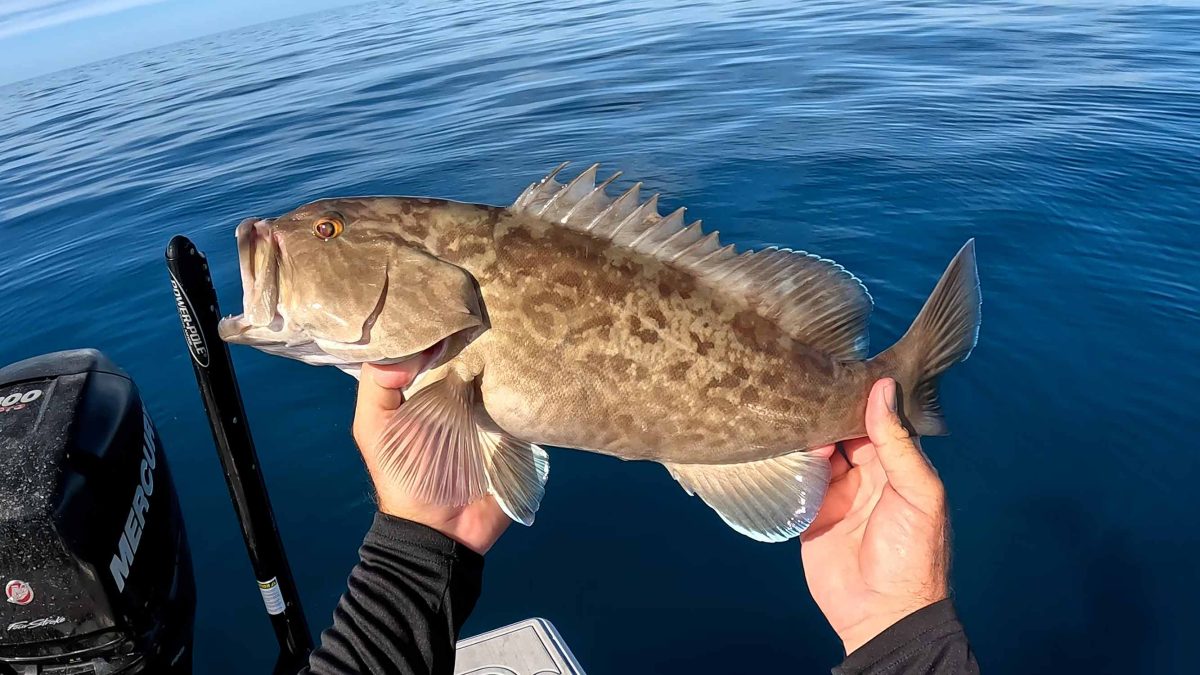
Boca Grande: Nearshore Reefs and Wrecks
For those looking for a more adventurous angling experience, Boca Grande’s nearshore reefs and wrecks are home to a variety of species. Grouper and snapper can be found lurking among the structure, making these spots a favorite for bottom fishing enthusiasts. Cobia, king mackerel, and other pelagic species can also be encountered in the nearshore waters, adding to the excitement.
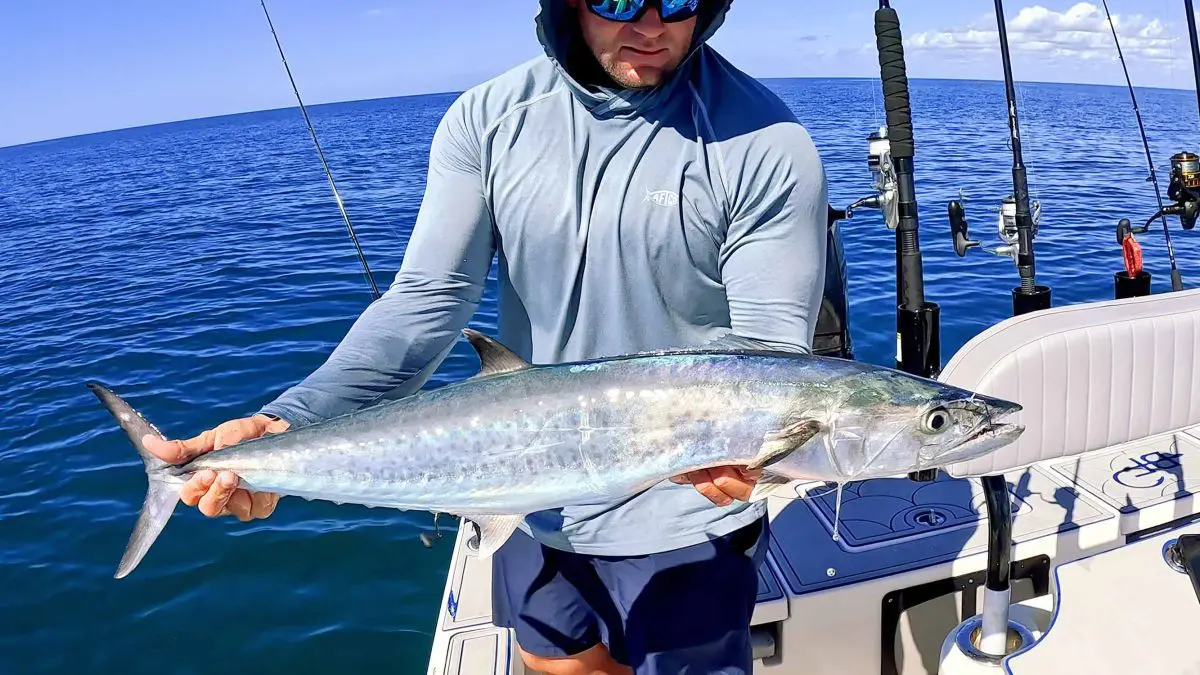
Boca Grande Fishing Charters
To make the most of your fishing adventure in Boca Grande, booking a trip with a reputable fishing charter captain is highly recommended. These experienced guides know the local waters intimately, increasing your chances of success. They provide all the necessary gear, bait, and expertise to ensure a safe and enjoyable fishing experience. Whether you’re a novice or a seasoned angler, fishing charters in Boca Grande offer a personalized and educational experience that can’t be beaten.
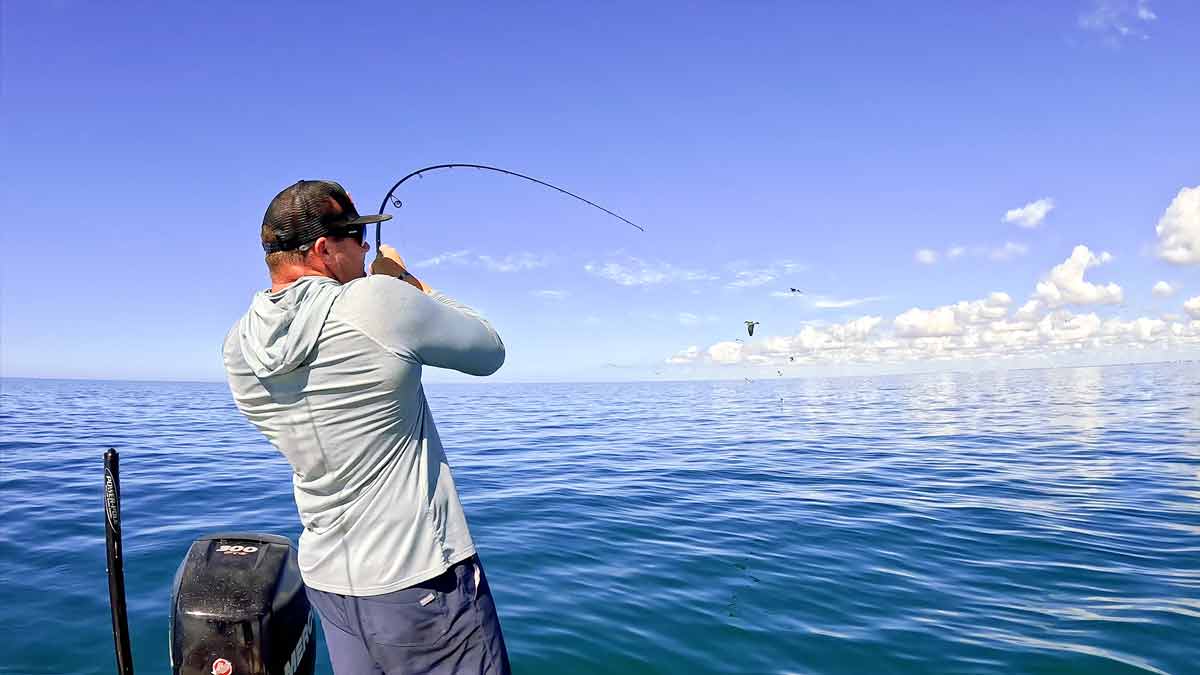
Seasonal Angling
Seasonal variations in fish behavior is essential for successful fishing in Boca Grande.
Tarpon, as mentioned earlier, are most active from April to July. Inshore species like redfish, snook, and trout can be targeted year-round, with variations in tactics depending on the season. Nearshore fishing for species like grouper, snapper, and king mackerel is best during the warmer months when these fish are more active.
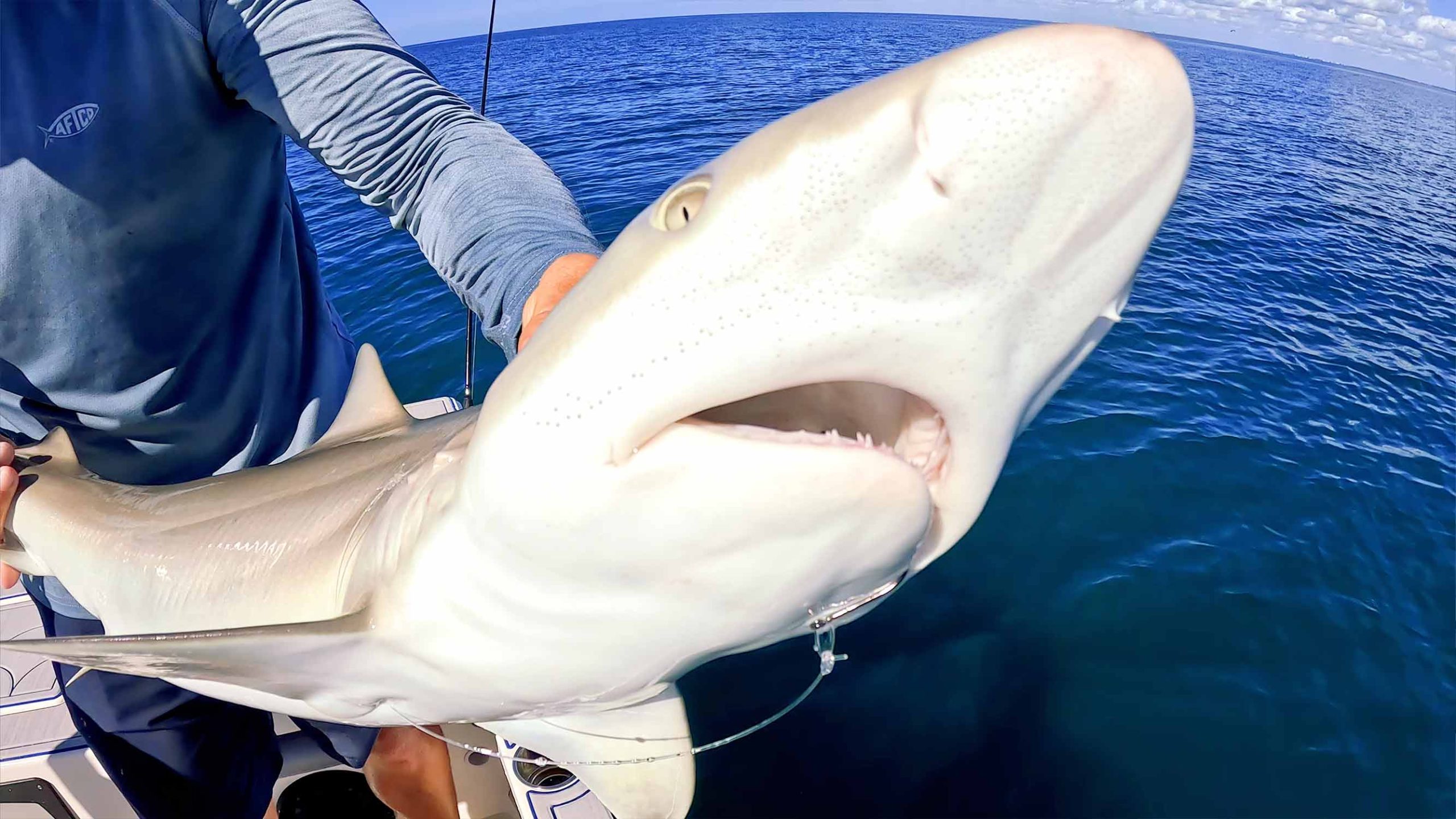
Boca Grande, Florida, is a dream destination for anglers of all levels. Whether you’re drawn by the thrill of tarpon fishing, the challenge of inshore species like redfish and snook, or the variety of nearshore opportunities, Boca Grande has it all.
To maximize your experience, consider booking a fishing trip with a trusted charter captain who can guide you to the best spots and help you land that trophy catch. So, pack your fishing gear and get ready to immerse yourself in the world of angling in the “Tarpon Capital of the World.”
Explore More
Gasparilla Florida Fishing Grand Slam Snook Redfish Trout
Fishing for Snook Anna Maria Island Florida
Anna Maria Island Snook Fishing
Nestled on the west coast of Florida, Anna Maria Island is a paradise for fishing enthusiasts, offering an ecosystem teeming saltwater fish.
Watch Video: Catching Snook Anna Maria Florida
Fishing Anna Maria Island for Snook
Of the many fish species found around coastal Florida, the Snook stands out as a true prize. With its sleek silhouette and challenging nature, the Snook attracts anglers from all corners of the world to the waters of Florida’s Gulf coast.
Tips for Catching Snook in Anna Maria Florida
Catching snook in Anna Maria, Florida, is a popular activity for both novice and experienced anglers. Key tips include fishing during the early morning or late evening hours when snook are most active, focusing on areas near structures like docks, mangroves, and seawalls where snook like to hide, and using live bait such as shrimp, pinfish, or mullet for the best results.
It’s also important to pay attention when fishing to the tides, as moving water often brings snook out to feed. Using a strong leader (20lb-60lb Fluorocarbon) to prevent break-offs.
- Fish during dawn and dusk: Snook are more active and likely to bite during these times.
- Target structures: Look for snook around docks, mangroves, and seawalls.
- Use live bait: Shrimp, pinfish, and mullet are highly effective.
- Monitor the tide: Snook feeding activity increases with moving water.
- Use strong leader: To prevent break-offs from the snook’s sharp gill plates.
- Stay informed on regulations: Be aware of size and bag limits for snook.
The Allure of the Snook
Snook, scientifically known as Centropomus undecimalis, is recognized by its pronounced lateral line, a silvery-green hue, and the ability to put up a memorable fight. It’s no wonder that snook fishing has become a rite of passage for those visiting Anna Maria Island.
Best Times to Fish Anna Maria
Fishing in Anna Maria, Florida, offers year-round opportunities, but the best times to fish can vary depending on the species you’re targeting and local weather patterns.
Generally, the spring months of March through May are excellent for tarpon, snook, and redfish, capitalizing on their spawning seasons when they are more active and abundant.
The summer months, especially early morning or late evening to avoid the heat, are ideal for offshore fishing, targeting species like grouper and snapper.
Fall Fishing brings cooler temperatures and less crowded waters, making it a great time for a variety of inshore species. Winter can be productive for sheepshead and black drum, especially around piers and structure.
Always consider the tidal movements and lunar phases, as they significantly affect fish activity, with high tides and full moons often leading to the best catches.
- Spring (March-May): Prime time for tarpon, snook, and redfish.
- Summer (June-August): Best for offshore fishing early in the morning or late in the evening.
- Fall (September-November): Cooler temperatures make for comfortable inshore fishing for a variety of species.
- Winter (December-February): Good for sheepshead and black drum around structures.
- Tidal movements and lunar phases: High tides and full moons can increase fish activity.
Best Seasons for Snook Fishing around Anna Maria Island
Snook fishing is largely influenced by the seasons. The prime time to target these elusive creatures is during the warmer months, particularly:
Spring (March to May):
As the waters warm up, Snook move from their winter hideouts, becoming more active and feeding aggressively.
Summer (June to August):
This is the spawning season for Snook. They are often found in large numbers near passes and inlets.
Tackle and Techniques for Catching Snook
To ensure a successful Snook catch:
Rods and Reels:
A 7 to 9-foot medium-heavy spinning rod paired with a 4000 to 5000 series reel is ideal. This combination offers enough backbone to handle the Snook’s sudden bursts of energy.
Fishing Line:
A braided line in the 10 to 30-pound range is recommended, providing a good balance between strength and sensitivity.
Lures for Snook:
While live bait like pilchards and mullet are always effective, artificial lures such as jerk baits, topwaters, and soft plastics can be just as enticing for Snook.
Live Bait Fishing for Snook
Live bait fishing is another technique among seasoned anglers targeting Snook. Using live baits, such as pilchards, mullet, and shrimp, can replicate the natural prey Snook encounter in their habitat, making it an incredibly effective method.
The pulsating movements and authentic scents emitted by live baits attract the Snook’s attention, prompting an aggressive strike. When opting for this approach, it’s important to use circle hooks and a strong leader, as Snook have abrasive mouths and sharp gill plates that can easily cut through regular lines.
Float rigs or free-lining the bait allows for natural movement, increasing the chances of enticing this elusive predator. Whether fishing near mangrove edges, along bridges, or over grassy flats, live bait presents an authentic and irresistible meal for Snook, often resulting in thrilling and rewarding catches.
The Perfect Fishing Locations to Catch Snook
Anna Maria Island is surrounded by great fishing locations, but for the best Snook experience, consider:
Grass Flats for Snook:
These areas, abundant in seagrass beds, act as a Snook magnet. Early morning or late afternoon are the optimal times to fish here.
Mangrove Lined Shorelines:
Snook often use the roots of mangroves as cover. Casting close to these structures can yield fruitful results.
Docks and Bridges:
These structures provide shade and protection, making them favorite hangouts for Snook.
| Species | Best Times of Year | Live Bait | Artificial Bait |
|---|---|---|---|
| Snook | Spring to Early Summer (March to August) | Pilchards, Mullet, Shrimp | Jerk baits, Topwaters, Soft Plastics |
| Redfish | Fall (September to November) | Mud Minnows, Crabs, Shrimp | Gold Spoons, Soft Plastic Jigs, Weedless Baits |
| Sea Trout | Winter to Spring (December to April) | Pinfish, Shrimp | Soft Plastic Jigs, Topwaters, Suspending Plugs |
Snook
Spring to Early Summer (March to August)
Live Bait: Pilchards, Mullet, Shrimp
Artificial Baits: Jerk baits, Topwaters, Soft Plastics
Redfish
Fall (September to November)
Live Bait: Mud Minnows, Crabs, Shrimp
Artificial: Gold Spoons, Soft Plastic Jigs, Weedless Baits
Redfish
Winter to Spring (December to April)
Live Bait: Pinfish, Shrimp
Artificial: Soft Plastic Jigs, Topwaters, Suspending Plugs
Conservation and Ethical Practices
It’s important to note that Snook is a regulated species in Florida. Adhering to the set regulations ensures a sustainable Snook population for future generations. Before heading out:
Familiarize yourself with the seasonal closures, size limits, and bag limits.
Adopt catch and release practices whenever possible.
This not only helps in conservation but also ensures that the Snook population continues to thrive.
The Ultimate Snook Experience Awaits
Anna Maria Island, with its pristine waters and vibrant marine life, truly is an angler’s paradise. The experience of catching a Snook in Cortez is unparalleled.
Fish Anna Maria with Florida Fishing Company

Explore More
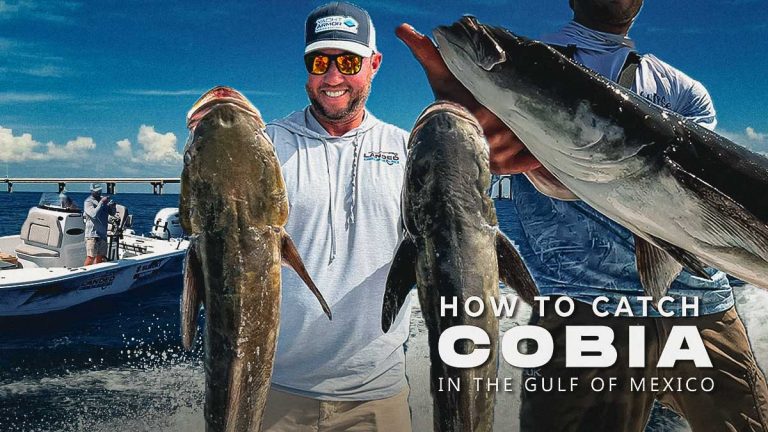
Catching Cobia in the Gulf of Mexico I'm drawing from years of professional guiding experience. Let's break down the…

Offshore Fishing Cobia Tampa Florida The thrilling world of Cobia fishing in Tampa, Florida. Adrenaline-pumping battles with these powerful…
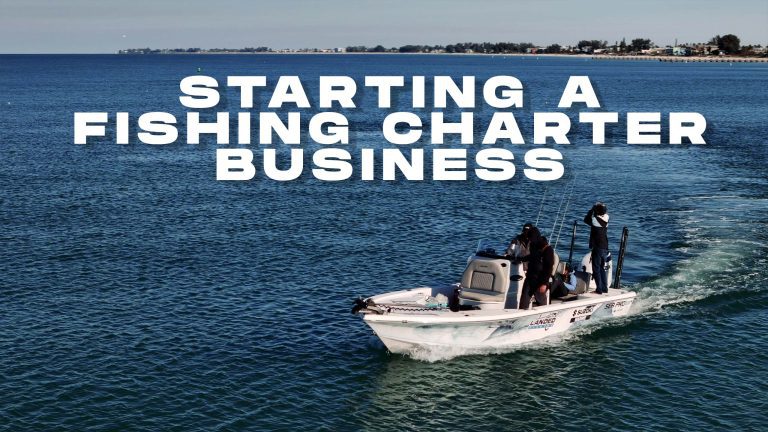
Starting a Fishing Charter Business Captain Randall's online course, How to Start a Fishing Charter Business, empowers avid anglers…
Nate Edwards Fishing Tournament
2nd Annual Nate Edwards Fishing Tournament
EVERGLADES CITY, FL – Following last year’s unprecedented success, the 2nd Annual Nate Edwards Fishing Tournament is set to kick off on October 27th and 28th at Everglades Fishing Company.
Watch Video: Nate Edwards Fishing Tournament
Florida Fishing Tournaments:
This much-anticipated event not only offers an unparalleled fishing experience but also fosters community spirit by raising funds for Autism, Special Needs, and Trade Scholarships for Local High School Programs.
A Time for Angling and Giving
Snook, Redfish, and a Trout– total measurement of the
3 fish combined and largest total measurement
(Can only have 1 of each fish) per boat
+ Calcutta (additional entry)
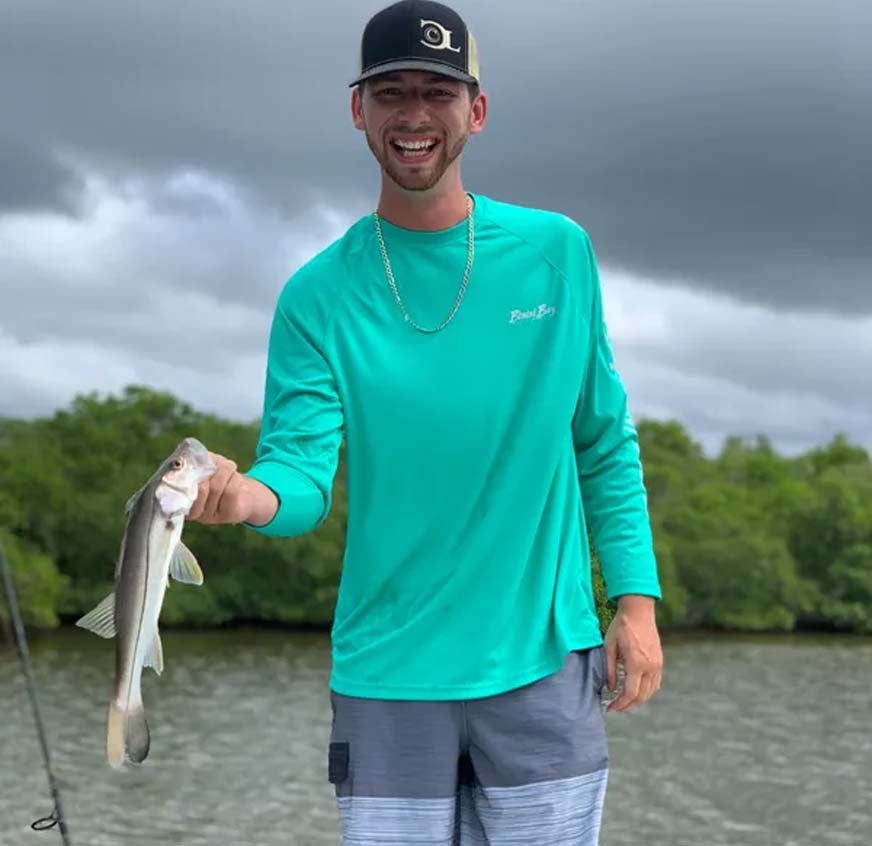
In memory of Nate the event is committed to giving back to Everglades City School, people with Autism Spectrum Disorder and people with intellectual and developmental disabilities.
Remembering Nate Edwards
Nate Edwards tragically passed away on October 1st, 2021, at the age of 24. Known for his generosity and commitment to others, he was deeply loved by many. A passionate angler, the Nate Edwards Fishing Tournament was launched in 2022 in his memory. This event serves as a testament to his love for fishing and helping those in need, aiming to create lasting memories in the process.
Nate Edwards, a beacon of dedication and community spirit, is a name that resonates profoundly within the Everglades community. Even though he is no longer with us in person, his legacy continues to inspire and unite us.

The event is in partnership with the following charities:
▪ LARC Inc helps people with intellectual and developmental disabilities something that was very personal to Nate. Nate would be delighted and honored to be helping in this way.
▪ Autism Services of Southwest Florida to help people with Autism Spectrum Disorder. The need is real for individuals and their families and Nate would have been so pleased to see this support.
▪ Everglades City School to establish the NATE EDWARDS SCHOLARSHIP fund which will fundgraduating students 👩🏽🎓 a full scholarship to either a Trade school and/or Captains school of their choice.
The tournament follows a catch, photograph, and release format for snook, redfish, and trout. The weigh-in will be hosted by the Everglades Fishing Company (EFC).
Fishing Tournament Info
Date:
Friday October 27th & Saturday 28th, 2023
Where:
Everglades, Florida
Entry Info
Adult Anglers-
$150.00 if you pay before September
1st.
$170.00 if you pay after September 1st.
Child Anglers- $75.00 (under 12)
Tournament Documents
2023 Nate Edwards Fishing Tournament Information (PDF)
IMPORTANT: Tournament Waiver (Needed upon Arrival)
Dates & Locations
FRIDAY, OCTOBER 27
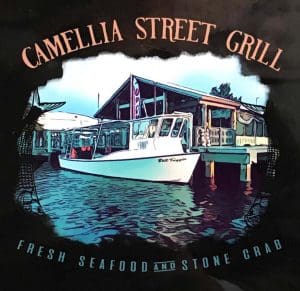
• REGISTRATION
• CAPTAINS MEETING
• DINNER/RAFFLES/50/50/SHED RAFFLE/AUCTION
Camellia Street Grill will once again be hosting this mandatory Captain’s Dinner. (at least one team member must be present)
• Registration begins at 5:30 pm.
SATURDAY, OCTOBER 28
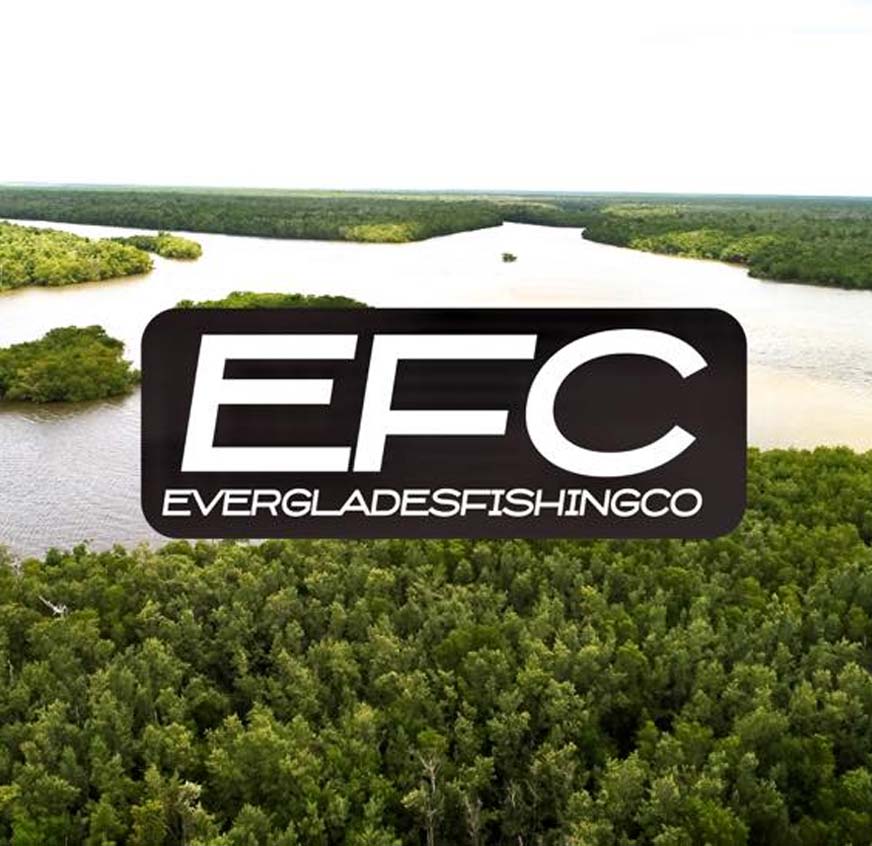
• 7 AM lines in
• CATCH, TAKE PHOTO AND RELEASE FISHING DAY
• WEIGH IN: 2:00PM – 4:30PM
Everglades Fishing Company (EFC) has once again offered their central location for our “Weigh In” this year.
(Bring photo of fish on the supplied ruler with team lanyard displayed).
“Weigh In” is no earlier than 2pm and no later than 4:30pm
And all of our Anglers & Sponsors!
Maps & Locations
Friday Oct 27th @ Camellia Street Grill
Camellia Street Grill: 202 Camellia St W, Everglades City, FL 34139
Saturday Oct 28th @ Everglades Fishing Company
Everglades Fishing Company: 201 Collier Ave FL 3413, Ochopee, FL 34141
Building on a Legacy
After last year’s triumphant event, which saw enthusiasts from all corners coming together, the Nate Edwards Fishing Tournament has indeed established itself as more than just a pastime.
Landed Fishing, has joined forces with the organizers of this amazing event, and are keen on continuing the momentum from last year. A driving focus here at Landed Fishing is all about engagement & bridging communities.
Angling, Fun, and More
Participants can look forward to a weekend full of activities. From a captains meeting to amazing silent auctions, the event promises to keep attendees on their toes.
Thanks to a growing roster of sponsors, including big names like Sea Pro, Suzuki, and Simrad, the stakes are higher than ever. Last year was just the beginning. The event has even more in store for our anglers”!
A Few of the Sponsors
Fishing for a Cause
Beyond the thrill of the chase in the waters, participants will also have a shot at bagging some impressive gear and prizes.
But beyond the material winnings, the real prize lies in the difference made in the community. Funds raised will directly benefit Autism and Special Needs initiatives, along with bolstering Trade Scholarships for aspiring students in local high school programs.
A Brighter Future Ahead
In a time where global uncertainty looms large, the Nate Edwards Fishing Tournament stands as a beacon of hope.
Registration is open, and the event is available to anglers of all levels.
Event contact: Olivia
Call: 239-850-0886
Email: Nateedwardsfishingtournament@gmail.com
Explore More
Florida Grouper Fishing | Catching Grouper in the Gulf
Deep dive plug trolling is a top technique for landing these prized fish. In this guide, we’ll provide practical advice for your fall Gag Grouper fishing trips.
About Gag Grouper:
Gag Grouper are known for their delicious meat and strong fights. They prefer rocky bottoms, making deep dive plug trolling an effective method.
Gear and Tackle for Florida Grouper:
Rods and Reels:
Choose medium to heavy trolling rods with strong reels.
Lines and Leaders:
Opt for 50-80 lb braided lines and add a 60-100 lb fluorocarbon leader.
Deep Dive Plugs:
Use trolling-specific lures with realistic colors and rattles.
Downriggers:
Consider using downriggers for depth control, especially in deep waters.
Watch Video: Trolling for Fall Grouper
Location and Timing for Fall Grouper:
Fall Grouper Migration:
Target Gag Grouper in October when they move to shallower waters.
Grouper Hotspots:
Focus on natural and artificial reefs, shipwrecks, and underwater structures.
Grouper Regulations:
Always check local fishing regulations and bag limits.
Catching Grouper
Grouper Fishing Trolling Techniques:
Trolling Speed:
Maintain a speed of 2-4 knots to mimic prey movement.
Depth Control:
Use downriggers, diving planers, or lead core lines.
Presentation:
Experiment with lure colors and sizes to find what works.
Stay Alert:
Be ready to set the hook when you feel a bite or see your rod bend.
Safety and Conservation:
Safety First:
Ensure safety equipment, including life jackets and communication devices.
Catch and Release:
Release undersized or over-limit Gag Grouper to support conservation efforts.
Deep dive plug trolling in fall is an exciting way to catch Gag Grouper along Florida’s coast. Plan your trip, follow regulations, and use the right gear and techniques for Florida Grouper fishing success.
Explore More

Catching Cobia in the Gulf of Mexico I'm drawing from years of professional guiding experience. Let's break down the…

Offshore Fishing Cobia Tampa Florida The thrilling world of Cobia fishing in Tampa, Florida. Adrenaline-pumping battles with these powerful…

Starting a Fishing Charter Business Captain Randall's online course, How to Start a Fishing Charter Business, empowers avid anglers…
Carolina Rig for Catching Red Snapper
Guide to Saltwater Fishing for Red Snapper around Structures
We’ll cover the essentials for catching powerful and popular red snapper around reef structures using a carolina rig. Red Snapper are known for their fight and taste, making them a prized catch.
Watch Video: Bottom Fishing Carolina Rigs for Red Snapper
About American Red Snapper
Learn about these popular fish more commonly found off shore in deeper waters. Learn tips and fishing techniques for catching Red Snapper.
More Snapper Fishing Videos
American Red Snapper
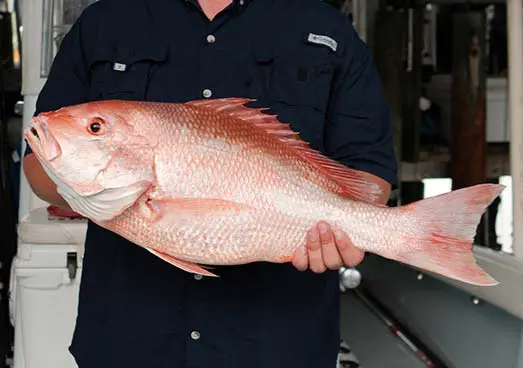
They have a vibrant red or pinkish body, prefer reef and wreck habitats, and feed on fish, crustaceans, and cephalopods.
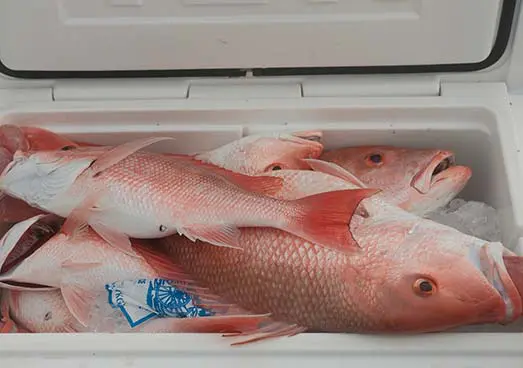
They can grow up to 40 inches in length and are known for their delicious, flaky flesh.
About Red Snapper
Red snapper (Lutjanus campechanus) is a highly prized saltwater fish species found in the warm waters of the Gulf of Mexico, the southeastern United States, and the Caribbean.

Appearance:
Red snapper typically has a vibrant red or pinkish color on the upper body, fading to a lighter shade towards the belly.
Carolina Rig for Catching Red Snapper
Utilize fresh or live bait like squid, cut baitfish (mullet or menhaden), or live baitfish (pinfish or croakers).

Gear Selection:
Use a medium to heavy action rod paired with a suitable reel equipped with a strong drag system.
Choose 30-50 lb test braided line for optimal sensitivity and strength.
Tackle Setup:
Rig a Carolina-style setup, which includes a sliding sinker, a swivel, a leader, and a circle hook.
Employ circle hooks (sizes 4/0 to 8/0) to minimize gut-hooking and enhance fish survival.
A Carolina rig for catching red snapper is a simple and effective setup used by anglers in saltwater fishing. Here’s a description of a Carolina rig for targeting red snapper:
Carolina Rig Components:
Mainline:
Use a strong, low-stretch braided line in the range of 30-50 pounds for durability and sensitivity.
Sinker:
A sliding sinker, typically made of lead, is used to keep your baited hook near the seafloor.
The sinker is threaded onto the mainline before the swivel.
Swivel:
A swivel is attached to the end of the mainline.
It serves two essential purposes: preventing line twist and connecting the leader.
Leader:
The leader is a separate piece of line, usually 1 to 4 feet in length, connected to the swivel’s other end.
It is typically made of fluorocarbon or monofilament line.
Hook:
A circle hook, sized between 4/0 and 8/0 depending on the bait’s size and the fish’s size you’re targeting, is tied to the leader.
Circle hooks are preferred to minimize gut-hooking and ensure the fish’s safe release when necessary.
Bait:
Red snapper are attracted to a variety of baits, including squid, cut baitfish (such as mullet or menhaden), and live baitfish (like pinfish or croakers).
The choice of bait can depend on local preferences and what’s available.
How-to setup a Carolina Rig:
Thread the sliding sinker onto the mainline, followed by tying the swivel to the end of the mainline.
Attach the leader to the swivel’s other end, using a secure knot.
Tie the circle hook to the leader, ensuring it’s securely fastened.
Add your chosen bait to the circle hook. The bait should be presented naturally, so avoid excessive rigging that restricts its movement.
Lower the Carolina rig into the water, allowing it to sink to the desired depth, keeping it just above the underwater structure where red snapper tend to congregate.
Maintain a slight slack in your line, allowing the fish to take the bait without feeling resistance.
When you feel a bite, give the fish a moment to take the bait fully, then gently set the hook with an upward motion.
After hooking a red snapper, use a controlled and steady retrieve to bring the fish to the surface.
The Carolina rig’s versatility and effectiveness make it a popular choice for targeting red snapper around structures like reefs, wrecks, and underwater formations in saltwater fishing.
Step-by-Step Setting Up the Carolina Rig:
1.) Attach a swivel to the end of your mainline.
2.) Fasten a 1 to 4-foot leader to the swivel.
3.) Secure the circle hook to the leader using a loop knot for bait movement.
4.) Slide an appropriate weight (1 to 4 ounces) onto the mainline above the swivel.
5.) Securely tie remaining end of leader to swivel or mainline.
6.) Use live bait by hooking through front of bait fish or chunk bait or alternative can be used.
Best ways to Locate and Catch Red Snapper
Employ fish finders and charts to identify underwater structures such as reefs, wrecks, and ledges where Red Snapper often congregate.
Look for drop-offs, underwater peaks, and areas with strong currents.
Effective Fishing Techniques:
Drop your Carolina rig to the desired depth, keeping it just above the structure where Red Snapper are likely to hide.
Maintain slight slack in your line to allow fish to take the bait without resistance.
Exercise patience; Red Snapper can be cautious and may take time to bite.
When you feel a bite, allow the fish a moment to take the bait before gently setting the hook with an upward motion.
Once hooked up, employ a controlled and steady retrieve to bring in the fish.
Adhering to Red Snapper Fishing Regulations and Conservation:
Stay informed about current fishing regulations and size limits for Red Snapper in your area.
Safety Precautions:
Monitor weather conditions and be prepared for any changes.
Saltwater fishing around structures is an effective method for targeting Red Snapper.
Where to Find Red Snapper
Red snapper inhabit a variety of underwater structures, including reefs, wrecks, ledges, and rocky outcrops.
Red Snapper prefer depths ranging from 50 to 300 feet (15 to 91 meters) but can be found at varying depths depending on their age and the time of year.

Red Snapper Behavior:
Red snapper are known for their cautious and sometimes finicky feeding habits, making them a challenging catch.
Red Snapper are opportunistic predators, feeding on a diet of fish, crustaceans, and cephalopods.
Red Snapper Size and Growth:
Red snapper can grow to impressive sizes, with adults commonly reaching lengths of 20 to 30 inches (51 to 76 centimeters).
Some individuals can exceed 40 inches (102 centimeters) in length and weigh more than 20 pounds (9 kilograms).
Fishing Regulations:
Due to overfishing concerns, red snapper populations are closely monitored, and regulations may vary by location.
Red Snapper is a popular fish for grilling, baking, frying, and a variety of culinary preparations.
Culinary Value:
Red snapper is highly regarded for its delicious, white, flaky flesh and mild, sweet flavor.
Red snapper is a prized catch among anglers and a sought-after species in the recreational and commercial fishing industry.
Due to its popularity and conservation efforts, it’s important for anglers to stay informed about regulations and sustainable fishing practices when pursuing red snapper. Anglers should check local fishing regulations for size limits, bag limits, and open seasons to ensure compliance.
Explore More
Mangrove Snapper Fishing
How-To: Mangrove Snapper Fishing
Know Your Target:
Mangrove snapper, also known as gray snapper, is a common inshore fish found in the coastal waters of Florida. They are known for their reddish-pink color with faint blue lines on the back.
Best Spots for Mangrove Snapper:
Inshore rocks and grass flats.
Bridges, piers, and docks, especially those with barnacle growth.
Near mangroves and oyster bars.
Best Times for Mangrove Snapper:
During incoming or high tides when snappers come in to feed.
Early morning or late afternoon, although they bite throughout the day.
Mangrove Snapper Fishing Gear:
Rod:
Medium-light to medium action.
Reel:
2000 to 4000 size spinning reels.
Line:
10-20 lb braided line.
Leader:
20-30 lb fluorocarbon, which is less visible underwater.
Preferred Mangrove Snapper Baits:
Live shrimp, pilchards, or small pinfish.
Cut bait such as mullet or sardines.
Artificial jigs or soft plastics mimicking baitfish or shrimp.
Mangrove Snapper Fishing Techniques:
Free-lining:
Use a live shrimp or baitfish without a weight.
Bottom fishing:
Use a weighted rig to keep bait near the bottom.
Popping cork:
Suspend your bait underneath to keep it off the bottom but within the strike zone.
Mangrove Snapper Fishing Tips:
Be patient and attentive; snappers can be nibblers.
Use circle hooks for easier hook removal and reduced injury to the fish.
Chumming the water can attract and keep snappers in your fishing area.
Handling & Conservation:
Use a dehooking tool to safely remove hooks.
Follow local state regulations for size and bag limits.
Practice catch and release when possible to ensure the fish population remains healthy.
Fishing for mangrove snapper along Florida’s Nature Coast can be a rewarding experience. With the right knowledge, gear, and techniques, you can increase your chances of catching Mangrove Snapper.
Watch Video: Catching Mangrove Snapper
NEW EPISODE SUN @ 2PM EST
Best Times to Catch Mangrove Snapper
| Seasons | Best Habitats | Comments |
|---|---|---|
| Spring | Bridges & Piers | Snappers move closer to structures for food & protection. |
| Grass Flats | They feed actively in warmer waters. | |
| Inshore Rocks | ||
| Summer | Near Mangroves | Spawning season; they are found in larger numbers. |
| Oyster Bars | Look for areas with good water flow. | |
| Artificial Reefs | ||
| Fall | Grass Flats | They feed to prepare for colder months. |
| Inshore Rocks | Look for structures with nearby deep water. | |
| Bridges & Piers | ||
| Winter | Deep Channels | They move to deeper waters to stay warm. |
| Near Inlets | Look for areas with minimal current. |
Remember, while seasons and habitats can guide you, local conditions, water temperature, and availability of prey can also influence the presence and behavior of mangrove snapper. It’s always a good idea to ask local anglers or bait shops for up-to-date information.
Best Baits and Lures for Mangrove Snapper
| Habitats | Best Lures | Best Live Bait |
|---|---|---|
| Bridges & Piers | Jigs, Soft Plastic Shrimp | Live Shrimp, Pinfish |
| Grass Flats | Popping Cork with Soft Plastics | Pilchards, Live Shrimp |
| Inshore Rocks | Metal Jigs, Crankbaits | Mullet, Sardines |
| Near Mangroves | Soft Plastic Minnows, Shrimp Imitation | Live Shrimp, Crab |
| Oyster Bars | Weighted Jigs, Soft Plastics | Mud Minnows, Crab |
| Artificial Reefs | Vertical Jigs, Soft Plastic Paddle Tails | Live Shrimp, Squid |
| Deep Channels | Deep Diving Crankbaits, Heavy Jigs | Cut Bait (Mullet, Sardines) |
| Near Inlets | Spoons, Twitch Baits | Pinfish, Live Shrimp |
Catching other Fish Species
While targeting mangrove snapper in the Gulf of Mexico, anglers often encounter a variety of other species.
It’s not uncommon to hook into Red Snapper, or Red Grouper especially near deeper structures or offshore reefs. Grouper, particularly the gag and red grouper, might take your bait when fishing near rock piles or ledges.
Spanish mackerel, with their swift strikes, can be frequent visitors to your bait, especially when fishing with shiny lures near the surface (flat line fishing).
Blackear wrasse, native to the tropical western Atlantic, are commonly found off Florida’s west coast.
While they’re not a primary target for most anglers, their striking appearance makes them a surprise if they strike your bait.
These reef-associated fish are characterized by their elongated bodies, vibrant colorations ranging from green to blue, and the distinctive black mark behind their eyes, which gives them their name.
Preferring rocky substrates and coral reefs, Blackear wrasse feed primarily on small invertebrates, including crustaceans and mollusks.
Additionally, sheepshead, recognized by their distinct black stripes, often share habitats with mangrove snapper and can be caught using similar baits, particularly around pilings and oyster bars.
Other “Reef” Species
Another by-catch anglers might experience when fishing for mangrove snapper in the Gulf of Mexico includes key grunts.
These fish, named for the grunting noise they produce, often frequent the same rocky and reef habitats as mangrove snapper. Their silvery body with a yellow tinge and distinctively arched lateral line makes them easily distinguishable.
Grunts are attracted to similar bait, and while they might not be the primary target, they’re known for their delicate, tasty flesh.
Additionally, remoras or “sharksuckers” can latch onto your bait or even the fish you’re reeling in.
Recognizable by their flattened heads and the suction-cup-like structure on top, remoras are often seen attached to larger marine animals, like sharks, utilizing them as a mode of transport and feeding on their host’s leftovers.
While they’re not typically sought after by anglers, they can add an element of surprise to the catch.
Explore More
No posts found!

